
March 2021, Issue 2 NEWS EUROPE // UK PERFORMANCE REVIEW p6 NEWS APAC // CS EXPANDS QIS RANGE p18 Q&A // FINIQ SETS MIP RECORD p32 @SRP_Insider
FRONTIER SRPInsight
THE EFFICIENT





Editorial: Amelie Labbé, Pablo Conde, Lavanya Nair, Summer Wang, Marc Wolterink
Production: Paul Pancham
Marketing: Monique Kimona Bonnick
Sales: Reihaneh Fakhari
If you are interested in having a similar bespoke report produced for your organisation, please contact:
Reihaneh Fakhari
T: +44 (0)20 7779 8220
M: +44 (0)79 8075 6761
E: Reihaneh@structuredretail products.com
REPRINT POLICY:
SRP’s Reprint Policy: Articles published by SRP can be sent to sources for reference and for internal use only (including intranet posting and internal distribution).
If an article is to be shared with a third party or re-published on a public website (i.e. a location on the World Wide Web that is accessible by anyone with a web browser and access to the internet), SRP offers reprints, PDFs of articles or advertisements, and the licensing to republish any content published on the SRP website. Prices vary depending on size, quantity and any additional requirements. To request authorisation to republish any Q&A, profile or feature published by SRP, please contact: info@structuredretailproducts.com
3 www.structuredretailproducts.com SRPInsight CONTENTS Contents News Europe 4 News Americas 12 News Apac 16 Analysis: France H2 2020 24 Feature: liquidity issues, regulatory hurdles and crypto ETPs 26 Q&A: CACIB ESG offering 29 Q&A: FinIQ sets MIP record 33 Expert View 36 Products wrap X People moves X
Russian regulator clamps down on sale of ‘complex products’
The Russia regulator is targeting financial intermediaries in a move to restrict the sale of derivative and structured products to non-qualified investors.
The Bank of Russia has released new recommendations aimed at securities houses and banks acting as their agents urging them to refrain, until the launch of mandatory testing, from the sale of ‘compound and high-risk financial instruments’ to nonqualified retail investors that don’t have the appropriate experience to invest in such instruments.
According to the regulator’s monitoring data, an increasing number of products is being actively marketed to individual customers ‘with the amount of yield dependent on specific circumstances (eg change in the price of several underlying assets), other compound / structured instruments or hybrid structures comprising an investment product with a bank deposit’.
In many such cases, financial intermediaries are ‘knowingly misleading customers, supplying distorted information about product properties’ which has resulted in investment products taking the place of savings products without taking into account their clients’ risk profiles and investment objectives.
‘It is intolerable to offer to consumers who have no relevant expertise or investment experience compound investment products with high risk investments or those with a complicated yield calculation procedure, or products with leverage or a foreign component’, stated the Bank of Russia in a circular released last week.
The list of products sold to non-qualified investors targeted by the regulator include derivatives, as well as asset management strategies investing in derivatives, margin transactions (leverage trading) and structured deposits combining a deposit account with a market linked investment.
The new restrictions prohibit securities firms from offering financial derivatives to nonqualified investors that are not traded on-exchange
“In general, we have major attack from the Bank of Russia on structured products sold to non-qualified retail investors,” a market source told SRP.
UNREASONABLE EXPECTATIONS
The Bank of Russia released another circular in late December 2020 banning professional securities firms from carrying out a range of transactions on behalf or at the expense of non-qualified retail investors.
According to the regulator, securities firms will be prohibited to offer Russian or foreign bonds to non-qualified investors ‘where payments depend on whether or not particular circumstances occur’.
The new restrictions also prohibit securities firms from offering financial derivatives to non-qualified investors that are not traded on-exchange, but do not apply to mortgage-backed securities (MBS) and bonds with a coupon rate of at least two-thirds of the base rate.
The Bank of Russia also noted that it is ‘inadmissible’ to sell complex instruments
that offer ‘unreasonable expectations and can incur in capital loss’ to investors lacking sufficient knowledge and experience and that do not understand the specific characteristics and risks embedded, and that this ‘may discourage newcomers from investment opportunities available in the financial market’.
The Bank of Russia also announced in mid-January that assets from investors held in brokerage accounts stand at RUB6.7 trillion (US$80 billion), according to statements by securities firms active in the country.
The new rules were drafted by the Service for the Protection of Consumer Rights and Ensuring the Availability of Financial Services of the bank of Russia and are based on clauses of the Federal Law of April 22, 1996 No. 39-FZ “On the Securities Market”.
The new restrictions which were opened for public discussion between 11 January and 24 January 2021 will come into force 10 days after the day of its official publication.
Deutsche pushes robotics theme, offers capital protection on SG prop play
The bank’s thematic solutions are a direct result of the mid-term vision of its investment strategists.
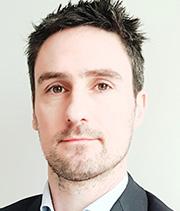
Deutsche Bank Belgium is distributing the Robotics & Automation Equities Note (90) 2029.
The product offers 100% participation in the performance of the Solactive Industrial Robotics & Automation AR 5% EUR-index, subject to an overall minimum capital return of 90%. It has a maturity of just under nine years and is issued on the paper of Deutsche Bank, the bank’s parent company.
The index is developed by Société Générale, and consists of 30 global companies whose products and services focus on robotics and automation solutions in an industrial context. It was launched on 13 March 2018 and makes its debut on the SRP Belgium database.
“Robotics is a theme that we have been positive about for a number of years,” said Christophe Blontia (pictured), senior product manager structured products, Deutsche Bank, Brussels. “We have pushed it in our investment strategy, mainly through investment funds such as
Pictet Robotics, a fund that we recommend under our ‘best advice’ selection.”
It is the first time that Deutsche offers access to the theme through a structured product.
The companies included in the index belong to sectors such as general semiconductors, programmable logic and factory automation equipment, and they must have a market capitalisation of US$1 billion or more.
The index reinvests 100% of the dividends paid by the companies in the index and deducts a synthetic dividend of five percent per year, a feature which makes it possible to structure a product on the index.
“The robotics theme, without a synthetic dividend, would be too expensive, and too volatile to provide capital protection. We expect there is enough potential in this sector over the next nine years to more than offset that synthetic dividend,” said Blontia.
Apart from robotics, the bank has launched a number of structured products
on various other themes in recent years including demographics, health care, artificial intelligence, and ESG.
“These are themes that are recognisable to our customers, and therefore also have a commercial appeal,” said Blontia.
The thematic solutions Deutsche offers are almost always a direct result of the midterm vision of the bank’s chief information officer and its investment strategists. These are all social themes that have received a lot of attention in recent years and which the bank expects to remain pertinent.
“For our advisers, it is also pleasant to be able to tell a very concrete story to the client, a story about an index that is sometimes more interesting than a pure benchmark index with little thematic narrative attached,” Blontia concluded.
Deutsche Bank was one of the most active distributors in Belgium in 2020, with a 10% share of the market, third behind KBC (35%) and Belfius (34%) only. The 38 structured products that were marketed by the bank last year were worth an estimated €320m and issued via nine different issuers.
The robotics theme, without a synthetic dividend, would be too expensive, and too volatile to provide capital protection
4 5 www.structuredretailproducts.com www.structuredretailproducts.com NEWS | EUROPE NEWS | EUROPE SRPInsight
UK performance review: returns hit by market vol, but 6% of maturities delivered losses
UK investors in structured products have been hit by the market volatility triggered by the Covid pandemic and financial turmoil of 2020.
Structured products maturing in 2020 have delivered probably one of the worst performances and returns since the aftermath of the financial crash of 2008/9, according to a report by Lowes Financial Management (LFM).
The Structured Products Annual Performance Review 2021 released by the UK financial adviser shows that market turmoil resulted in 16 among 235 structured product maturities in 2020 realising a capital loss. This represents six percent of all maturing products in the UK, and compares to four loss-making maturities among 334 maturities in 2019.
“The UK stock market has been in turmoil throughout the year and few investments have been immune to the
dramatic turbulence,” Lowes managing director Ian Lowes (pictured), said. “2020 still represented another successful year for retail structured products. Almost 70% of all products maturing last year generated positive returns for investors.”
Average annualised returns for all products maturing in 2020, including structured deposits were 3.52% against 5.73% in 2019 and 6.37% in 2018.
Sector annualised returns may have dropped on recent years and against the 6.27% average of the last decade (Jan 2010 – Dec 2019) but they remained inflation-beating. While there were some products that resulted in a capital loss, this still represented less than seven percent of the overall market.
All the products maturing at a loss were inherently riskier share or commodities linked plans, many of which were already forecast to make losses even before the pandemic struck, according to Lowes.
Despite the loss of capital incurred by some of the products maturing in 2020, there were 11 plans that matured realising an annual return greater than 10%. More than half the rest beat inflation after delivering an average annualised return of more than four percent.
SRP data also shows that over 200 products with maturity dates in 2021 have already matured including 128 products linked to single indices worth an estimated US$1.4 billion; 91 linked to baskets of indices worth US$690m; and
seven linked to baskets of shares worth an estimated US$48.7m.
Of those 212 products are linked to the FTSE100, 66 linked to the Eurostoxx50 and 31 linked to the S&P500.
BEST AND WORST PERFORMERS
Half of all the products maturing in 2020 were linked solely to the FTSE 100 Index. Structured deposit and capital protected structures returned an average annualised return of 1.82% over an average duration of 5.35 years and the capital at risk plans returned an average
of 5.68% over an average duration of 4.24 years.
According to the performance analysis high-risk plans delivered the best and worst performance. The Hilbert Investment Solutions Kick Out Series: 3 Stock Defensive Autocall Issue 1, which matured returning investors’ original capital in addition to a gain of more than 10% (20.98% pa according to SRP data) after just six months.
This growth structure combining a knockout, reverse convertible, worst of
Crelan debuts Credit Suisse fund managers index
option payoff types was hedged by Citi offered exposure to a basket of shares (Barclays, Aviva, Vodafone).
The worst performing plan was Meteor’s Crude Oil Kick Out Supertracker Plan March 2015. This plan matured at the end of five years with an annual capital loss of 74.89%, making an annualised loss of 24.12%.
This product hedged by Morgan Stanley was linked to the S&P GSCI Oil ER index and had a knockout, capped call payoff profile. SRP

Crelan has collaborated with Credit Suisse for the launch of the Top Citywire Fund Managers Booster USD 2029 note in Belgium. The eight-year, US dollardenominated note, offers a return equal to 135% of the average performance of the iStoxx Top Citywire Fund Managers AR Index. There is no cap and the minimum return is 100%.
The index replicates the performance of a portfolio that invests in mutual funds run by fund managers who have shown better historical risk-adjusted performance compared to their peers and are rated high by Citywire. The index which makes its debut on the SRP database, was developed by Credit Suisse and Qontigo’s index provider Stoxx as a new customised strategy using an external data set
provided by Citywire as opposed to data from trading venues.
If the volatility of the portfolio is greater than six percent, the index will temporarily and partially invest in money market funds, to limit the volatility of the basket, and thus the note. Once the volatility falls below the six percent threshold again, the position in the money market funds will be reduced again.
The quality of the fund manager is an important feature of the note, according to Koen Theys, product manager, off-balance sheet at Crelan.
Citywire, which tracks more than 16,000 active managers in 41 countries across the world, has a large database to conduct its research. It has a fully quantitative methodology and its analysis is based on the information ratio, a recognised measure of the risk-adjusted return.
Apart from distributing structured products on a regular basis (Crelan launched 12 public offers worth an estimated €140m in Belgium in 2020, according to SRP data), the Belgian bank also offers its clients access to large spectrum of funds, including those of Amundi, BNP Paribas Investment Partners, and CA Indosuez Wealth Asset Management, among others.
Exane enters Swiss structured products market
The Six Swiss Stock Exchange has added Exane Solutions to its pool of issuers of structured products and Exane Derivatives SNC as a new trading participant – Exane is the 21st structured product issuer trading products on SIX and Exane Derivatives SNC joins 96 other players as a new trading participant.
The first product, a delta one certificate tracking an Exane proprietary index - the Exane Apollo Index in euro, was listed on 22 January 2021, adding to the palette offered by Switzerland’s largest exchange for structured products.
There are over 300 live structured products issued by Exane on SRP database mainly sold in Italy and Ireland – the majority are linked to stocks and sold as structured certificates.
With a trading turnover of CHF22.6 billion and a total of 898,304 trades, SIX exchange reported a record year for the structured products and warrants segment in 2020.
6 7 www.structuredretailproducts.com www.structuredretailproducts.com NEWS | EUROPE NEWS | EUROPE SRPInsight
data Distributor Product Name Performance p.a. Maturity Hilbert Investment Solutions Kick Out Series: 3 Stock Defensive Autocall - Issue 1 20.98% 12-Feb-2020 Walker Crips Structured Investments UK & Europe Kick-Out Plan Issue 1 (MS008) 14.91% 10-Feb-2020 Investec Defensive Enhanced Returns Plan 3 (Eurostoxx50 Option) [Investec version] 11.76% 24-Nov-2020 Dura Capital FTSE 100 Autocall Plan 19 11.25% 30-Jan-2020 Investec Defensive Enhanced Returns Plan 2 (Eurostoxx50 Option) [Investec version] 10.99% 14-Oct-2020 Walker Crips Structured Investments UK Kick-Out Plan Issue 2 (MS005) 10.94% 10-Feb-2020 Reyker European Supertracker Plan 62 - October 2014 10.89% 17-Oct-2020 Reyker European Supertracker Plan 62 - August 2014 10.80% 17-Aug-2020 Investec FTSE 100 Enhanced Kick Out Plan 82 10.50% 28-Jan-2020 Meteor Asset Management FTSE 100 / Eurostoxx 50 Kick Start Plan February 2017 10.25% 13-Feb-2020 Source: StructuredRetailProducts.com
German market sounds alarm on new tax regime
Investor associations, banks and exchanges in Germany are demanding a fair taxation of private investors as a new tax framework looms.
The German Derivatives Association (DDV), the Stuttgart Stock Exchange and the main association for German investors – the German Protection Association for Wertpapierbesitz (DSW) - are appealing to the Federal Ministry of Finance to stick to the line set out on its June 2020 draft letter which established warrants would not be classified as futures.
“We are expecting the final letter by the Federal Finance Ministery [shortly],” Lars Brandau (pictured), managing director at the DDV, told SRP.
He said that in the draft version released last summer, leverage products such as warrants were not classified as futures “and therefore not deemed to be taxed in the same way as futures”.
However, since then the position of the German government seems to have changed. “That’s why we are currently discussing the topic both with decision makers and publicly. We are very much in favour with what the Federal Ministry drafted last summer,” he added.
In the draft of the application letter of the Federal Ministry of Finance released June 2020, warrants were not classified as forward transactions which meant “a clear, appropriate delimitation was achieved” preventing “investors from being impaired in structuring their securities accounts and also having to make costly individual investments”.
Otherwise, according to the DDV, there is a risk of severe tax disadvantages, subsequent tax payments and uncertainty for hundreds of thousands of investors.
“The question is a broader one because it is not only about leverage products,” said Brandau. “It is about tax injustice, Germany as a financial center, product
diversity for investors and, last but not least, the entire securities culture in Germany. It is not, as is often assumed, a luxury problem for a few, but a real problem for private investors as a whole.”
For forward transactions, the Annual Tax Act, which has been in force since the beginning of 2021, provides for a limited possibility of offsetting losses only with other forward transactions and income from standstill transactions.
NEW HURDLES
“A securities culture with active and responsible investors also requires an adequate tax framework,” said Dr. Henning Bergmann (right), managing director board member at the German Derivatives Association. “The asymmetrical taxation has already been discussed very criticallyit must not be expanded.”
Dr. Michael Völter, chairman of the board of directors of the Association of BadenWürttemberg Stock Exchange, noted that many active investors use warrants to hedge their portfolios - especially in a challenging market environment as is currently the case.
“Classification as a forward transaction would create new hurdles here,” he said. “That would have negative effects on the wealth accumulation of many investors and also on the investment culture in Germany as a whole.”
Marc Tüngler, general manager at the investor association DSW, said that the tax reorganisation of loss offsetting is another hard blow for private investors and leads to massive uncertainty.
The three bodies believe the June draft of the letter was at least a fair proposal on how the application should be regulated with regard to warrants
and would give affected investors a perspective.
A deviation from the original draft ‘arouses misunderstandings and once again reveals the hostile sentiment towards private investors,’ stated the three association in a statement.
According to the associations, there are “good factual arguments” as to why warrants should be classified for tax purposes as other financial instruments and not as futures - the classification should be based on the method of execution of option trades.
In the case of warrants, this is step-bystep so they are to be assigned to cash transactions for tax purposes and not to forward transactions.
A study by the WHU - Otto Beisheim School of Management last year showed that hundreds of thousands of private investors would be affected by the new tax regime.
The WHU study also found that 68.8% of users of leverage products such as warrants use them for hedging which means that the restriction on loss offsetting will make it more difficult for investors to make use of this option.
The DDV will continue to talk with all the parties involved as “discourse always comes first“. However, the investor association has already signalled that it will take legal action.
“In principle, we consider the regulation to be unconstitutional as a whole,” said Tüngler.
The DDV represents 15 issuers of structured securities and seven direct banks in Germany.
Marex
debuts BTC autocalls with downside protection
The London-based issuer is targeting investors seeking to get exposure to Bitcoin by extracting yield from the cryptocurrency’s volatility
Underlying Bitcoin (BTC1 Curncy*) Bitcoin (BTC1 Curncy*) Bitcoin (BTC1 Curncy*)
*Front Month rolling Convention: 3 business days before the Last Trade Date of the corresponding future contract
Source: StructuredRetailProducts.com
Marex Financial Products has rolled out the first ever autocallable notes linked to bitcoin with downside protection to capitalise on increasing demand from institutional investors.
The three-month maturity USDdenominated structured notes offer downside protection barriers set at 69%, 56%, and 70% level respectively - using a European barrier style each note will deliver 50%, 25% and 35% pa. at maturity as long as the price of bitcoin futures remain at the same or above their strike levels.
“Three-month maturity is currently showing very attractive levels, however given the overwhelming demand, we have priced different versions with lower barriers or low strike, longer maturities and in EUR,” Joost Burgerhout (pictured), head of Marex Financial Products, told SRP. With the addition of minifutures and autocalls on bitcoin futures Marex is
targeting investors that may struggle to hold physical bitcoins by providing access via a Marex issued note or certificate.
“This provides them with exposure on an asset in a wrapper that they understand and can hold in their securities portfolio along with other more traditional investments,” Burgerhout said, adding that demand comes from investors seeking to extract yield from the volatility of the cryptocurrency.
“Whilst becoming a more mainstream asset as it being picked up financial institutions and institutional investors, Bitcoin prices remain volatile.”
The issuer has plans to increase its catalogue of products linked to cryptocurrencies and is already considering issuances on “ethereum, litecoin, bitcoin cash and ripple, both via futures and ‘physical, as well as notes denominated in BTC”.
“It is important for us to offer attractive conditions to our investors as well as having access to underlying markets so we can efficiently manage our risks,” said Burgerhout.
SRP DATA
According to SRP data, there are 2,407 live products wrapped as certificates using five currencies (Bitcoin, Litecoin, Ethereum, Ripple and Bitcoin Cash), as well as 377 products linked to the Bitcoin Group and one to the SEBA Crypto Asset Select Index.
The main providers of cryptocurrencylinked products are Vontobel (2,401) and Leonteq across five markets including Germany/Austria, Switzerland, Denmark and Sweden. The favoured payoff structures to deliver these products are short leverage certificates – (mini futures) (783), long leverage certificates - mini futures (770), and trackers (12).
8 9 www.structuredretailproducts.com www.structuredretailproducts.com NEWS | EUROPE NEWS | EUROPE SRPInsight
Currency USD USD USD Tenor 3 months 3 months 3 months Strike Level 100.00% 100.00% 100.00% Barrier Level 69.00% 56.00% 70.00% Barrier Type European European European Frequency (months) Monthly Monthly Monthly Autocall Trigger Level 100% 100% 100% Coupon Type Guaranteed Guaranteed Guaranteed Coupon (p.a.) 50% p.a. 25% p.a. 35% p.a. if
autocalled
Corporate & Investment Banking
BBVA expands QIS range, readies decrement/ risk control strategies
The Spanish bank has added two new indices developed in-house to its quantitative investment strategies (QIS) index family.
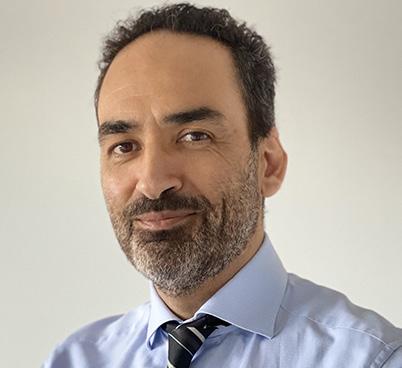
The expansion of the bank’s index family features a focus on sustainability with the addition of two new climate-related indices based on Solactive’s-owned Paris Aligned (PAB) and Climate Transition Benchmarks (CTB) - the Solactive BBVA Climate Action PAB Europe index and Solactive BBVA Climate Action CTB Europe index.
Both indices feature the EU climate benchmark label, a certification that includes the EU standards for climate transition portfolios and guarantees investors transparency and comparability. The indices also include factors like the optimisation of the companies’ weights based on their score for transition opportunities and the greatest probability of keeping global warming under 2ºC.
“The new indices offer investors the opportunity to invest in the companies that will be driving our economy, the European economy, to a low carbon one, taking advantage of the opportunities it provides and minimising the risks it can mean,” Pablo Suarez, head of quantitative investment strategies at BBVA, told SRP. “The EU Climate Benchmark certification gives investors the comfort of compliance with the EU rules guaranteeing alignment with the Paris Agreement and benefiting from the fiscal effort outlined in the EU
2019 multi-year financial budget and the 2020 recovery plan linked to the European Green transition”.
THE INDICES
The Solactive BBVA Climate Action PAB Europe Index provides exposure to a portfolio that, based on ISS ESG climate analysis, is in line with a well below 2ºC scenario through 2050, allowing investors to be at the forefront of an immediate transition towards the Paris Agreement’s goals. Both the Solactive BBVA Climate Action CTB Europe Index and Solactive BBVA Climate Action PAB Europe Index represent a baseline climate-aware allocation, which is set up to project the path towards a low-carbon economy rounding out the release.
The Solactive BBVA Climate Action PAB Europe’ goes beyond the minimum requirements established by the EU, and seeks to take advantage of the transition opportunities that emerge from the Paris Agreement, mitigating risks and aiming for an average temperature well below 2ºC – the most demanding scenario; the Solactive BBVA Climate Action CTB Europe seeks to capitalise on the opportunity to transition to a low carbon economy and greater climate awareness for investors.
The Solactive BBVA Climate Action CTB Europe Index features a 30% reduction in carbon intensity versus its respective benchmark while the Solactive BBVA Climate Action PAB Europe Index takes a tighter approach with a 50% reduction as well as additional activitybased exclusions.
Both indices start from a set of baseline exclusions of controversial weapons and international norms violators - to select the index constituents, Solactive applies a modified carbon risk rating approach,
which pools the 125 stocks with the highest rating for the final index. The selection is then optimised to overweight the stocks with the best expected future CO2 performance while also meeting the requirements of the EU CTB and PAB regulation.
UPCOMING STRATEGIES
As it expands its market activity in the QIS space by designing, manufacturing and distributing investment strategies that materialise in self-created indices intended for end investors, the bank is considering other popular strategies in the structured products market which will be “available over the coming weeks”.
“Decrement and risk control versions of the indices fit perfectly into our product offering and constitute the most transparent and cost-effective way for our structured products investors to get exposure to our indices,” said Suarez. “On top of that we envisage a growing trend in the usage of underlyings and payoffs with risk mitigating features.”
The two new QIS strategies add to the Solactive BBVA ixESG Global Leaders Index, which applies a dynamic methodology through the selection of leading ESG companies, and comprises 10 stocks from different countries including Nvidia, Kinnevik, Align Technology, Wheaton Precious Metals and Mettler-Toledo.
“We are actively marketing with all our clients, products linked to the Solactive BBVA ixESG Global Leaders in different payoffs and wrappers and this is already translating into a significant pipeline to materialise over the coming weeks,” said Suarez. “Investors overall have praised the unique and innovative approach of our methodology, something we are looking to confirm with these indices.
Global opportunities adapted to you
Our global footprint and specialist expertise give us multi-asset coverage of our clients’ requests, so we can offer you a wide variety of responsible investment products according to your needs, including innovative solutions like Investment Strategies.
Check out our Structured Product digital solutions
BBVA ePricer
DLIB BBVA
E-Connectivity solutions & 3rd party platforms


For more information: bbvacib.com bbva.info/CIBLinkedin

10 www.structuredretailproducts.com NEWS | EUROPE
Desjardins champions market-linked ESG deposit series
Upon entering 2021, sell-side executives and firms are still recalibrating their businesses in what appears to be a never-ending bid to keep up with the turbulent market mood swings that were brought on by the Covid-19 pandemic.
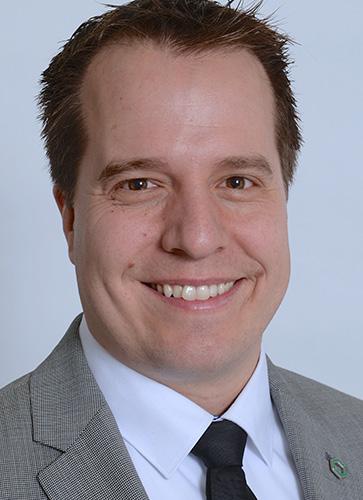
Thematic investing gained momentum in 2020 with environmental social governance (ESG) taking centre stage in a number of markets, though the phenomenon lags in the Americas, behind its European counterparts.
SRP spoke with Dominic Laurin (pictured), market-linked product manager at Canadian bank Desjardins to discuss its market-linked ESG offering, how it has adapted to the 2020 market crash, the Canadian ESG structured product landscape and what could be on the horizon for 2021.
What was your take on the 2020 market crash and how did it impact your structured product activity at Desjardins? (Most popular underlyings and asset classes etc?)
Dominic Laurin: At the time of a market crash, I believe it is always important to think about how we can adjust our product offers to continue to meet the needs of our clients. Among other things, we have made some changes in our offer this year to suit the context.
For example, we launched a new product, the ‘Guaranteed Investment – Changing Consumer Needs.’ This product offers return potential from companies whose products and services reflect emerging consumer needs and trends in the context of the worldwide COVID-19 pandemic. We also became aware of a high demand for ESG products and this is why we launched three new ESG products. (more details below).
Was your activity impacted compared to previous years?
Dominic Laurin: The pandemic did not have much of an effect on our activities until the beginning of the fourth quarter when we saw a certain slowdown in sales. Low interest rates are a real challenge for the structuring of guaranteed capital products right now. We have seen a certain shift of our sales towards shorter term products. Also, the way of thinking of our clients has changed, it has evolved towards more responsible investment.
How is the Canadian market primed for structured product investors? What are the challenges for wider adoption?
Dominic Laurin: The need for yield
is a growing concern for Canadian investors and structured products can be very useful to answer this need. The attractiveness of standard fixed income investments is getting lower and this creates potential for structured products. However, this comes with a challenge to make sure structured products are well understood by investors who were not using these products in the past years.
What would be the overall appeal of structured products given the market and interest rates (lower entry points, higher coupons/wider buffers)?
Dominic Laurin: Desjardins currently only offers Principal-protected products, and this type of product has been hit especially hard with the current market environment of historically low interest rates. Even though investors are still looking for capital protection the current level of maximum returns we can offer is beginning to have an impact on product attractiveness.
Some investors who don’t need 100% capital protection tend to have a bigger interest in principal at-risk products since it offers higher potential returns. This is especially true for income products.
Desjardins plans to start offering principal at risk products later this year and this will definitely help us to answer a wider range of investor needs. In the current market environment these types of principal at risk income products can definitely be interesting compared to standard fixed income products.
Structured products can extract value in bull, bear, and sideway markets. What products/strategies will now be on demand based on your experience around similar market turbulence?
Dominic Laurin: The current market environment makes it very difficult to customize principal protected products for specific market views. The addin features that we used to imbed in principal protected products to fit specific market views is now getting costly. This is why adding a Principal at risk line of products later this year will help us to better answer client needs for specific market views.
What inspired the ESG principal protected note that was previously on offer?
Dominic Laurin: While this note is not offered anymore, I would like to focus on the new Market-Linked Term Deposit ESG series we launched this year.
The first product in this series is the Priority Terra Guaranteed Investment. This product is a responsible investment that allows the clients to take advantage of the yield potential of environmentally conscious companies. The performance of this investment
follows a basket of securities in various economic sectors including renewable energy, with the exception of the tobacco, nuclear and weapons sectors. The second product is the Women’s Impact Guaranteed Investment.
This product offers the clients the return potential of companies from various economic sectors around the world that have at least 30% of women on their board of directors.
Finally, the last product in this series is the Sustainable Water Management Guaranteed Investment. This product offers the clients the return potential of companies that work with the world’s most precious natural resource, water. This investment offers exposure to the utilities and industrial sectors.
How would you describe the ESG structured products market in Canada? (Is it still growing? Why isn’t it as popular in Canada as Europe or Asia?)
Dominic Laurin: We noticed that Canada is lagging a little behind Asia or Europe when it came to the integration of ESG criteria on structured products. However, I believe that Covid-19 has positively impacted investors who are even more
interested in ESG structured products than prior to the crisis.
The three ESG structured products that we are currently offering will remain in high demand for investors. I believe that investors will begin asking for a more diverse group companies on the S criteria, namely information about the health and safety of employees.
What’s your short-term outlook for structured products market?
Dominic Laurin: The first half of 2021 will be full of challenges. It will be interesting to see the impact of Covid-19 on the global macroeconomic growth. Even if there are multiple vaccine candidates, governments globally are facing distribution challenges.
The vaccine distribution is much slower than what people expected. Moreover, central banks are determined to maintain very favourable financing conditions to help the recovery of their economies so we could expect low interest rates to remain for 2021.
Capital guaranteed structured products in the current low- rate environment strive to be the product of choice as the potential upside far exceeds a regular term deposit rate.
J.P. Morgan debuts prop play in US
The investment bank has deployed a custom index not seen before in the structured products retail market via a new indexed annuity targeted at US retirement investors.
Nationwide has teamed up with New development and distribution partner AmeriLife to distribute the Nationwide Peak 10 fixed indexed annuity (FIA).
The firm’s Peak 10 is the latest addition to Nationwide’s product lineup, and its first annuity in partnership with AmeriLife.
The new indexed annuity offers a fixed account and four indices, including two exclusive new indices from leading financial institutions J.P. Morgan and AllianceBernstein. The J.P. Morgan Cycle Index, exclusively available within Nationwide Peak 10, ‘seeks to outperform the market, allocating to stocks and bonds, with an equity allocation that rotates between different “smart beta” factors based on the business cycle’.
The AllianceBernstein Growth and
Value Balanced Index, also currently available only via the Nationwide Peak 10, seeks to generate ‘consistent returns while maintaining balance to navigate changing markets, with equity and-fixed income sleeves within a single portfolio which is managed to a 5% annualized volatility target using a risk-controlled process’.
Nationwide Peak 10 also offers two options linked to S&P DJI indices - the S&P 500 Price Index and the S&P 500 Daily Risk Control Index.
12 13 www.structuredretailproducts.com www.structuredretailproducts.com SRPInsight NEWS: AMERICAS NEWS: AMERICAS
Nationwide rolls out ‘in-plan’ FIA range as insurers recalibrate their offering
US indexed annuity providers are rolling out drastic actions to keep abreast of the turbulent changes taking place in the annuity market with low interest rates proving to be a formidable hurdle.
Nationwide has launched an ‘in-plan’ group fixed index annuity (FIA), the first of a planned suite of in-plan annuity products that will be launched over the span of 2021.
The Nationwide Indexed Principal Protection differs from retail FIAs as clients would invest in the annuity within a retirement plan such as a 401k, 403B and 457 while capitalising on certain tax advantages upon withdrawal of their nest egg.
The new investment alternative delivers the potential for growth based on the return of a risk control market index, the S&P 500 Daily Risk Control 5% USD Excess Return Index, while providing principal protection. No investment minimum is required for investors who choose to allocate to this new option.
“The underlying manages volatility and has absolute principal protection meaning that clients would be able to earn money up to a cap,” said Eric Henderson, president, annuities at Nationwide, adding that the new range can help investors nearing retirement to protect their investments from the current market volatility while providing the necessary growth to outpace inflation.
During the height of the Covid-19 pandemic, interest rates plummeted to all-time lows which heavily impacted the entire FIA market. Variable annuities also suffered though fared better than their counterparts.
A recent Nationwide Advisor Authority study found that the number-one financial concern of investors was losses in their portfolio related to Covid-19.
“As the year wore on, our variable annuity
suite did very well in particular, we launched a lifetime income benefit, which has fared very well,” said Henderson.
The firm also debuted a registered index-linked annuity later on in 2020 in response to a shift in investor preferences from FIAs to Rilas, as a result of the low historic rates.
Nationwide has adopted a ‘bullish’ approach to the variable annuity market and while observing prudency in terms of risk management and sales volumes.
“Nationwide is very diversified with our property casualty business versus our financial business, so having our products split over all those categories, allows us to continue to be comfortable with the amount of risk that we have in variable annuities,” Henderson said.
INTEREST RATES BITE
As investors develop a newfound interest in protection solutions to be better positioned for the next market downturn, a number of insurers offering retirement plans have recalibrated their offering to address economic uncertainty and ultralow interest rates.
Life insurance and annuities provider Prudential discontinued all sales of traditional variable annuities with guaranteed living benefits.
Nevertheless, the firm remains committed to its indexed variable annuity, the FlexGuard which was rolled out in May of 2020. The product has since crossed over US$1 billion in sales within six months of its launch, setting a historic record.
“We reviewed the marketplace under the changed environment with lower interest rates and capital markets volatility
and made the decision to exit traditional variable annuity with living benefits to put our focus on other areas that we thought could provide the most customer value overall,” said Dylan Tyson, president, Prudential Annuities.
According to Tyson, a main client priority is the growth and protection of their assets with an investment portfolio in place that is fully consistent with their risk tolerance.
“We want people to be able to have a strategy as well as stay invested and comfortable in it. We’re hoping to be able to provide the kinds of tools that they will need in order to do just that,” he said.
As for a potential comeback, it is unlikely that the traditional VAs will return in the near future.
“I think the market is changing in a way where traditional variable annuities with living benefits are going to play a smaller and smaller role,” said Tyson.
Fellow insurer Transamerica has taken a bold stance by not only pulling out of variable annuities with benefit riders, but also by halting the issuance of new FIAs.
The insurer stated that in the current market conditions, products that have to rely on low interest rates are on the chopping block.
The firm’s parent Aegeon also announced that it would be exiting the standalone long-term care market in a bid to free up capital and increase margins.
“We will focus on asset accumulation annuities that are less interest rate sensitive,” said Blake Bostwick, chief executive officer of Transamerica’s individual solutions division.
TrueMark elevates structured outcome with ‘uncapped upside’ series
With structured outcome products making waves in the exchange-traded fund (ETF) market, SRP caught up with ETF provider TrueMark’s chief executive officer, Mike Loukas to discuss the firm’s latest launch.
TrueMark recently announced the launch of its seventh structured outcome fund boasting a 2.0 buffer. The ETF is subadvised by SpiderRock Advisors, a Chicago-based asset management firm specialising in option overlay strategies.
The fund (JANZ) provides structured outcome exposure to the S&P 500 Price Index. TrueMark believes its structured outcome ETF suite is the first of its kind to offer built-in downside buffers with uncapped upside participation.
“We believe in the positive return bias of US, large cap equities,” said Loukas. “Upside volatility events occur in a nonsequential and non-linear pattern, and it’s important to capture those events when they occur.
“When the market runs, it runs quickly, and it rises sharply. Investors need to be in position to capture that. Longterm compounded returns are heavily dependent upon capturing this good volatility, as we call it.”
The new product delivers a buffer of between eight and 12% on the first of the index’s losses over the fund’s one-year
investment period and has an expense ratio of 0.79%.
The launch responds to new investor needs as the first generation of the structured outcome ETFs only addresses one side of the volatility scale as it tries to mitigate bad volatility.
“What we’re trying to do is address both sides,” said Loukas. “We want to mitigate the bad volatility and capture as much of that good volatility as possible, because it really is fundamental to achieving or maximizing your long-term gains.”
Loukas noted that the anticipated post-lockdown cyclical rotations of the previous year served as a playing field for growth buyers which stemmed concentrated activity and secular growth in specific technology segments such as artificial intelligence.
“In the last couple of quarters, I think we’ve seen a resurgence of investors looking for yield. There are still plenty of growth investors out there as well, so you’ve got a plethora of different undercurrents in the market right now,” said Loukas.
BNP Paribas, Credit Suisse in QIS push
Structured outcome funds can also aid in minimising drawdown risk and in turn, assists retiree clients in guarding their nest eggs.
“A situation where a client has to withdraw money when the market is in a trough is less than ideal since they would not be participating in that snapback or rebound,” said Loukas.
“These types of products help address one of the major concerns of drawdown risk for retirees (or those nearing retirement) in the sense that mitigating that downside can help protect them against untimely withdrawals, which can be particularly detrimental depending on where the market is.”
Investor education, however, remains a constant effort in the investment business as investors need to understand the difference between cyclical growth and secular growth, or the difference between long-term compounded gains and short-term volatility.
“Establishing clear expectations is the key to helping advisors and investors alike build successful portfolios,” Loukas said.
BNP Paribas has appointed the Quantitative Investment Strategies (QIS) group of Credit Suisse Asset Management (CSAM QIS) to act as the allocation agent for the CSAM QIS Dynamic Multi-Factor Diversified Strategy (DMD7) index.
The DMD7 index seeks to provide diversified exposures across a range of mutually complementary systematic investment indices offered by BNP Paribas, and offers access to a portfolio diversifier, in a synthetic format (unfunded) that aims to generate attractive performance while being broadly uncorrelated with stocks and bonds.
Under the agreement, BNP Paribas will continue to be the sponsors and calculating agent the DMD7 in accordance with its governance framework whilst CSAM QIS will oversee the analysis and selection of BNP Paribas’ underlying index components on behalf of DMD7, and actively manage DMD7’s index component allocations and risk exposures.
14 15 www.structuredretailproducts.com www.structuredretailproducts.com SRPInsight NEWS: AMERICAS NEWS: AMERICAS
Nomura eyes structured products in international wealth management push
The Japanese investment bank has expanded its wealth management business beyond Asia ex-Japan with the launch of its International Wealth Management (IWM) unit, which will target high-net-worth individuals (HNWIs).

Nomura’s IWM will develop products together with global markets (GM) and investment banking (IB) under the wholesale division, including structured products.
The new unit has hired over 20 private bankers and investment advisors in Hong Kong and Singapore as the Japanese bank aims to more than triple assets under management in its IWM business by March 2025 by enhancing its client franchise, wealth management products and services platform.
“For starters, apart from the core market of Asia ex-Japan, we are also looking at opportunities in some of the growth markets in Emea,” a senior source told SRP. “The collaboration between GM and IWM will allow GM to offer best-in-class flow products and structured products, as well as market-leading research to our IWM clients.”
The IWM will target entrepreneurs, family offices and external asset managers. “We
also expect to see more cross-divisional activities as our IWM client base will own companies that could generate additional business for GM and IB. Similarly, we expect GM and IB to refer clients to IWM,” said the source.
Following the integration of IWM into its wholesale business in April 2020, the Japanese bank appointed Ravi Raju as head of IWM in September 2020 based in Singapore. Its domestic wealth management business in Japan continues to be aligned to the domestic retail business.
“The initial focus of the recruitment drive has been to strengthen our presence across Greater China, Southeast Asia and the Global South Asia market,” said Raju (pictured).
The restructuring came as Nomura’s wholesale division recorded a net revenue of JPY248.7 billion in its Q1 20 ended on 30 June, the highest since March 2002 - 93.5% of which was from GM while 6.5% from IB.
Nomura lost momentum in Q2 20 ended on 30 September when the net revenue generated from GM decreased by 17% to JPY192.3 billion despite a 74% increase to JPY28.1 billion quarter-on-quarter posted by IB.
INVESTMENT PRODUCTS & ADVISORY SOLUTIONS
As reported, Akshay Prasad joined Nomura in early December 2020 as managing director and head of investment products & advisory solutions, Asia Pacific, from Deutsche Bank’s wealth unit where he worked for nearly 14 years. His last role there was head of investment advisory, Global
South Asia, where he managed a sales team delivering cross-asset advisory and discretionary solutions for clients across Asia and Europe. He started his career with Citi’s wealth management unit.
Aditya Sehgal has joined as executive director to help drive transformation and business development for Investment Products & Advisory Solutions. He also joins from Deutsche Bank Wealth Management, where he was a director and cross-asset investment specialist with responsibility for bespoke multiasset structured solutions for clients’ investment and hedging needs by partnering with coverage teams in Singapore, Hong Kong and Dubai. He worked at Deutsche for 11 years.
Prasad’s team is completed with Sooraj Arur who joins as executive director and head of lending & credit solutions, Asia Pacific. He joins from Deutsche Bank where he was a director in structured lending, originating financing deals, structuring credit solutions and negotiating bespoke loan documentation for Asia Pacific wealth management clients in markets including Singapore, Hong Kong, Indonesia, Thailand, India and the Middle East. Before Deutsche, he was a credit specialist at Citibank.
CLIENT COVERAGE
The new division which reports to Rig Karkhanis, deputy head of GM and head of GM, Asia ex-Japan, has also expanded its client coverage capabilities.
Wayne Yang has joined as Group Head, Greater China, from Baxian Private and Investment Bank, where he was CEO. He started his career more than 30 years ago and has held multiple senior level positions at private banks including
Aditya Sehgal has joined as executive director to help drive transformation and business development for
Investment Products & Advisory Solutions
two stints spanning two decades at Citi’s private bank. He has also held leadership roles at the Asia Pacific private banking teams of Merrill Lynch and Deutsche Bank.
Trevor Mak has been hired as relationship manager for Hong Kong. He joins from UOB Kay Hian where he was managing director, private wealth management, since March 2020. Before that, he was a managing director at Citigroup’s private bank, covering Hong Kong HNW clients for over 12 years. He started his banking career with Standard Chartered in 1984 in Hong Kong, and has worked in private banking at UBS, Coutts, Standard Chartered and Julius Baer.
Johnny Liu joins a managing director focused on family office coverage for Greater China. He joined from Aldworth Management, a family office, where he was a partner. Before that he was head of global UHNW advisors, Greater China, at UBS’s private bank. He has also worked at HSBC, Credit Suisse and Deutsche Bank in wealth management and investment banking roles.
Other additions include Kitty Chen as team lead for China; Adil Khan as group head, Southeast Asia, focusing on the NRI market in the Middle East and Southeast Asia as well as the Middle East market; Brajesh Jha as group head, Southeast Asia; Mohit Gupta as team lead for Southeast Asia NRI; Charly Madan as Team Lead, Southeast Asia, focusing on Thailand and Vietnam; Nini
Rojanavanich as relationship manager, Southeast Asia, covering Thailand and Vietnam; Umesh Pandey as relationship manager, Southeast Asia, also covering Thailand and Vietnam.; and Kripa Bathija as relationship manager covering family offices and UHNW clients in Southeast Asia.
In addition, the Japanese bank has bolstered its Infrastructure and Platform team with the appointment of Mohan Kuppuswamy as head of architecture & technology, Asia Pacific, from HSBC where he was program head for platform, implementing Avaloq for Singapore and Hong Kong; and TS Murali as head of front office risk and supervision, Asia Pacific, from Citi Private Bank where he was business unit manager, South Asia, for seven years.
There are 82 live products distributed by subsidiaries of Nomura Holdings - led by Nomura Securities - in Japan (42), Germany (8), US (6), Mexico (3), South Korea (2), UK (2), The Netherlands (1), Ireland (1) while the remaining 19 are for institutional investors, according to SRP data.
The main issuers of the products distributed by the Japanese bank subsidiaries include Nomura Securities, Mitsubishi UFJ Trust & Banking and Municipality Finance. The majority of the products sold in Japan are unlisted notes ranging from 18 months to 30 years while three are continuous call overwriting funds.
S&P DJI adds target risk series to ESG range
S&P Dow Jones Indices (S&P DJI) has launched the S&P ESG Equity Target Risk Index Series, a new index that measures the performance of stock-bond allocations incorporated with ESG values.
It comprises of S&P ESG Equity Target Risk Moderate Index, S&P ESG Equity Target Risk Growth Index, S&P ESG Equity Target Risk Aggressive Index, which measure the performance of moderate stockbond allocations to fixed income, ESG-themed equity allocations and aggressive allocations to equities, respectively.
The growth and aggressive indices have been licensed to Taiwan Cooperative Securities Investment Trust as the basis of index funds.
A dynamic allocation strategy, which balances risk and return during drawdowns and recoveries, could provide investors some protection
The universe includes six ESG equity indices covering the US, Canada, Europe, the Middle East and Africa, Asia Pacific and other emerging markets, as well as two fixed income indices including the S&P Green Bond Select Index and S&P U.S. Aggregate Bond Index.
The most recent ESG index adopted with a structured product strategy from S&P DJI is S&P ESG Global Macro Index, which ‘exploits allocation between regional diversified bonds and ESG-themed equities based on economic and market trend signals and aims for a stable risk level by adjusting allocation between the portfolio and cash on a daily basis’, according to Tian Yin Cheng (pictured), senior director, strategy indices at S&P DJI.
16 17 www.structuredretailproducts.com www.structuredretailproducts.com SRPInsight NEWS | APAC NEWS | APAC
Credit Suisse adds hedge fund-linked prop index to QIS range
The Swiss bank has expanded its quantitative investment strategies (QIS) index family with a new proprietary index to be deployed via swaps, delta one certificates, principal protected notes and warrants
Credit Suisse has released today the Credit Suisse Man AHL TargetRisk Core Custom Index (TRCC Index), the first index tracking the Man Group’s AHL TargetRisk fund featuring quantitative long only multi-asset strategies. The TRCC Index brings the US$9.5 billion programme by investing in global inflation linked bonds, futures contracts (equity indices and government bonds), swaps on indices (credit and commodities) and scaling allocations to these asset classes based on market volatility.
Delivered through Credit Suisse’s proprietary structured platform –Quantum - the index employs three proprietary risk-managed overlays (volatility, momentum and correlation) to reduce overall drawdowns and exposure to swings in volatility while providing excess returns over the long term, regardless of market conditions.
The new multi-asset ‘risk-balanced, longonly’ underlying aims at capturing upside while providing downside protection. SRP understands there is already an undisclosed investment bank lined up for licensing the index.
“We believe this new index offers clients a rare opportunity to invest with a top-tier manager with structured product payoffs,” Clément Florentin, head Investment solutions structuring, Asia ex-Japan at Credit Suisse, told SRP. “This proposition has already attracted sizeable seeding investment from Asia.
“In Asia Pacific, where clients separate allocations into hedge funds, discretionary mandates and quantitative strategy indices, the TRCC Index sets a new trend by bridging the gap between the fund and the structured product world.”
This new index offers clients a rare opportunity to invest with a top-tier manager with structured product payoffs
China’s
small-medium banks meet issuance restrictions
The balance of structured deposits for Chinese small-medium banks at the end of December 2020 has fallen by 37.8% to CNY3.9 trillion (US$594.3 billion) compared with that at the end of December 2019.
As a whole, the group of banks has met the requirement to decrease the issuance of structured deposits by the end of 2020 to two thirds of the level recorded at the end of 2019, according to the latest data released by the People’s Bank of China (BoC).
The figure, which represents 66.3% of structured deposits from corporate clients and 33.7% from retail investors, shows a continued drop by 28.7% quarter on quarter when the Chinese banks were required to reduce their structured deposit issuance.
of any upcoming policies. “I’m not very hopeful that the issuance restrictions will be loosened,” said another market source.
In the meantime, the balance of structured deposits held by the ‘Big Four’ –Industrial and Commercial Bank of China (ICBC), China Construction Bank (CCB), Agricultural Bank of China (ABC) and Bank of China – has also decreased, although the largest lenders in the country were not targeted by the regulators.
RMB and foreign currencies as defined by the central bank, remain the main drivers of China’s structured deposits market amounting to 59.8% in December 2020.
The bank began to trade swaps on the index in Q4 20 with a ‘standard maturity or open-ended’ like Delta-1 certificates, while options are available up to ten years, said Florentin.
Along with protected notes and warrants linked to the index performance, the products are offered to retail and institutional investors along with in Asia (ex-Japan), Europe and Latin Americas.
“For insurance and bank accounts, the investment can be wrapped as capitalefficient volatility target call options on index with an aim to achieve above-bond returns with bond-like volatility,” said Florentin. “Delta one certificates, delta one swaps and options will be good options for pension companies and family offices as they pursue long-term, above-inflation return from diversified economic growth factor.”
Other products targeted include insurance products as the investment aims to provide above-inflation return that can be combined with insurance product guarantees. It will also benefit
from low-cost excess return options meeting strictly regulatory requirements.
TRCC INDEX
Calculated by the Singapore Exchange (SGX), the index is sponsored by Credit Suisse (Hong Kong) and was first launched on 11 September 2020.
Since inception of the TargetRisk program in September 2012, the index variants - Credit Suisse Man AHL
TargetRisk Core Custom 5% VolControl
Index and Credit Suisse Man AHL
TargetRisk Core Custom 10% VolControl Index - have posted an annualised return of 6.28% and 12.75%, a volatility of 3.74% and 7.48%, as well as a maximum drawdown of -5.5% and -10.79%, and a Sharpe ratio of 1.68 and 1.71, respectively.
Back-testing shows positive returns between 2012 and 2020 except in 2018 when the returns turned negative (-1% and -2.1%, respectively). The 60/40 benchmark index had a return of -7.3%. In 2019, the variants recorded their highest performance at 13.1% and 27.6%, respectively.
“The results at the year-end were totally expected,” a source at a medium bank and an active issuer of structured deposits, told SRP.
The watchdog has not introduced any new guidance. “We’re maintaining our balance (of structured deposits) in January at similar level as at the end of 2020,” said the source.
The issuance of structured deposits in 2021 will largely depend on the impact
The balance of the Big Four was down 23.5% to CNY1.8 trillion compared with the level at the end of 2019, 57.7% of which came from retail investors while the remaining from corporates.
Outside the ‘Big Four’, three stateowned banks (China Development Bank, Bank of Communications and the Postal Savings Bank of China) posted a combined balance of structured deposits of CNY772.1 billion, down 25.2% from the December 2019 level.
Medium and small banks, whose total assets were less than CNY2 trillion in both
The new guidelines set up controls on the expansion of structured deposits and outline a framework for tighter requirements
This dominance made them the hardest hit when Chinese regulators began to curb the unprecedented high issuance through a landmark regulation issued on 18 October 2019, which did not elaborate on the requirements until the China Banking Regulatory Commission (CBRC) gradually offered ‘window guidance’ from June 2020.
In this group are the most active issuers of structured products in the Chinese market - China Merchants Bank, Guangfa Bank, Ping An Bank and China Citic Bank, as reflected on SRP database.
RECORD GROWTH
Structured deposits in China registered a record growth in 2020, which came with an increasing use of ‘fake structures’ and arbitrage in the low interest rates environment, as reported by SRP.
The 2019 requirements came into effect on 18 October 2020 after the one-year grace period granted by the central bank.
The new guidelines set up controls on the expansion of structured deposits and outline a framework for tighter requirements including risk management, personnel training, disclosure and a cooling-off period of at least 24 hours, which has put dual currency investment business at risk.
Most banks only set out to carry out the guidelines in the later stage of the grace period as they aimed to achieve as much growth as possible as the deadline loomed.
18 19 www.structuredretailproducts.com www.structuredretailproducts.com SRPInsight NEWS | APAC NEWS | APAC
HSBC China debuts deposit tied to new mutual fund
The UK bank has issued its first structured deposit in China linked to the performance of as Allianz Global Investors Fund.
HSBC is pitching among Chinese retail investors a new structured deposit part of its new series ‘Ying +’ linked to the Allianz US Short Duration High Income Bond AT H2-EUR fund, to capitalise on the current low interest rates.
The ‘Ying+’ series also includes a new tranche of the structured deposit tied to the performance of Fidelity FundsGlobal Multi Asset Income Fund A-ACCEUR-HDGD, namely 盈+基金挂钩系列
1年人民币结构性存款产品002A款 (第
1期). It was issued on the same day (14 January) – 10 months after the launch of product’s last tranche.
Both products are growth structures with an uncapped call payoff profile and 90% principal protection – the tenor has been shortened to one year compared with previous structured deposits tied to mutual funds issued by HSBC China, which had two-year terms.
Chinese investors are shifting their expectations about structured products towards shorter investment periods, especially after ‘asset management
products’ were no longer allowed to offer capital protection from mid-2018 (with a grace period till the end of 2021), as SRP reported.
The product linked to the Allianz fund, 盈 +基金挂钩系列1年人民币结构性存款
产品001A款 (第1期), has a participation rate of 105% - the deposit linked to the Fidelity fund offers a participation of 110%.
NEW UNDERLYING
First rolled out in 2015 in US, the Allianz US Short Duration High Income Bond Fund was launched in Hong Kong in early 2017. The fund aims at long-term income and lower volatility by investing in short duration high yield rated corporate bonds of the US bond markets.
The fund has an average credit quality B+, a duration to worst of 2.14 years and a yield to worst of 5.09% - it is exposed to RMB currency risks as it invests in RMB share classes and non-USD currency exposure is limited to 20% of the fund assets.
Led by the gas distribution (12.5%) and
Nomura joins multi-dealer platform
lease financing (seven percent) sectors, the fund has delivered a calendar year return of 7.25%, 3.97%, -0.43% and 7.24% from 2016 to 2019.
HSBC China is an active provider of structured deposits linked to offshore funds. The bank has issued and distributed 19 products linked to the Fidelity fund from 2018 to 2020.
However, it has stopped issuing structured products linked to the PIMCO GIS - Income Fund E Acc EUR (Hedged) after eight tranches of fully protected growth structures were marketed in 2018 and 2019.
Other fund-linked structures sold by HSBC China include three structured deposits linked to BlackRock Global Funds - Global Multi-Asset Income Fund
A2 EUR Hedged, which were also 100% principal-guaranteed with an uncapped call payoff.
The two new products are open for subscription until 25 January. Minimum investment is CNY200,000.
Single Platform Investment Repackaging Entity (Spire) has incorporated several Nomura subsidiaries including Nomura International, Nomura Financial Products Europe, Nomura Singapore Limited, Nomura Securities and Nomura Bank (Luxembourg) to its multi-dealer repackaging programme bringing the number of dealers on the platform to 15.
The Spire programme allows for repackaged notes arranged by the platform’s dealer-members to be issued in standardised formats and offer access to a variety of underlying collateral assets and customisable payoffs. The platform was launched to bring transparency, liquidity and simplicity for institutional investors looking to buy repackaged structured products. To date, in excess of €20 billion equivalent has been issued to major UK, European and Asian institutional investors since the programme was launched.
The Spire platform was established by BNP Paribas, Citigroup, Credit Suisse and J.P. Morgan in May 2017. Barclays, Goldman Sachs, Crédit Agricole CIB and Morgan Stanley joined in 2018 with Natixis, BofA Securities Europe, Deutsche Bank, HSBC, Société Générale and NatWest Markets joining in 2019.
US China sanctions trigger structured products delisting in HK
Three US banks are in the process of delisting hundreds of structured products prompted by the blacklisting of Chinese stocks by the Trump administration.
Goldman Sachs, Morgan Stanley and J.P. Morgan will delist almost 500 structured warrants and other derivative products linked to the Hang Seng Index which contain the three telecom stocks (China Telecom, China Mobile and China Unicom) banned by an executive order signed by outgoing president Donald Trump.
The order which came into effect yesterday bans American investors from owning or trading in the stocks of companies said by the US government to be linked to the Chinese military.
Hong Kong Stock Exchange (HKEx) filings from the three US banks show that a total of 353 callable bull/bear contracts (158 J.P. Morgan, 72 Morgan Stanley, 123 Goldman Sachs), 139 derivative warrants (22 GS, 74 J.P. Morgan, and 43 MS), and five inline warrants linked to the Hang Seng Index and Hang Seng China Enterprises Index will be suspended from trading and terminated early.
The three issuers will only provide limited liquidity with one-sided bid quotes commencing today until the last trading
day scheduled to be 22 January – the products will be suspended from trading and early terminated on 25 January, according to the fillings. Citi is the only US warrant issuer not to have taken any action on their structured products linked to the sanctioned firms listed in the Hong Kong exchange.
The delisting of the products marks the latest chapter of the political and commercial feud between China and the US spreading into capital markets, and follows moves from major global index providers to axe the Chinese mainland companies from their benchmarks.
S&P Dow Jones Indices, MSCI and FTSE Russell last week announced the removal of the three Chinese telecom companies referenced in the US ban from their benchmarks and investable indices.
On 6 January, the New York Stock Exchange (NYSE) announced the delisting the US traded stocks of the three Chinese firms following new guidance from the US Department of Treasury’s Office of Foreign
UOB cashes in on ESG-linked flow notes
Assets Control in relation to the US administration’s executive order.
The HKEx does not expect the delisting to disrupt markets as they represent only about four percent of more than 12,000 derivative products listed in the exchange, and there are 15 other active issuers in the structured products market.
‘HKEx is working closely with the relevant issuers to ensure orderly delisting and facilitate buyback arrangements being arranged by the issuers. We are confident that there will be sufficient investment choices to meet market demand,’ it said in a statement.
In December, the average daily turnover of structured products in Hong Kong stood at HK$13.8 billion (US$1.78 billion).
J.P. Morgan (72 products/US$21.7m) and Goldman Sachs (111 products /US$20.3m) have been active providers among the top 10 issuers in Hong Kong since the beginning of the year with Morgan Stanley (27 products/US$4.6m) trailing at some distance.
United Overseas Bank (UOB) has distributed close to 300 ESG-linked flow structured notes as of the end of 2020, with a notional value of approximately S$250m. The Singaporean bank began to consider ESG as part of its full investment solutions catalogue from late 2019.
In October 2020, UOB incorporated ESG elements to its structured products business by selecting issuers based on an inhouse due diligence framework across its full suite of investment solutions.
The third largest Singaporean bank by assets had been working for around ten months to ‘strategise, plan and execute’ this ESG initiative.
As part of the campaign, UOB has also issued several green bonds selected from the constituents of the Bloomberg Barclays MSCI Green Bond Index as the first Singaporean bank to use it for green bond offerings and help its clients understand the risks of investments, ahead of any potential returns.
20 21 www.structuredretailproducts.com www.structuredretailproducts.com SRPInsight NEWS | APAC NEWS | APAC
South Korean ELS issuance drops further; DLS bounces back
The total balance of equity-linked securities (ELS) and derivative-linked securities (DLS) has amounted to KRW100.9 trillion (US$91 billion) following an upward trend of major stock markets as of 30 September, down KRW6.7 trillion from a quarter ago.
Early repayment increased by 1.4x to KRW15.8 trillion in Q3 20 while new issuance stagnated at KRW16 trillion due to lower investor demand, according to a report from the Financial Supervisory Service (FSS).
The proportion of self-hedging securities, which had been on a steady rise, stood at 57.8% as of the end of September, down 1.6% quarter-onquarter, as some leading securities houses reduced their hedging weight following the March 2020 market crash.
ELS
ELS (including equity-linked bonds) recorded sales of KRW9.8 trillion in Q3, down 7.5% QoQ, or a decrease of 53.3% compared to the sales volume recorded in Q1. Early as well as maturity repayment together grew 1.86x to KRW14.6 trillion as of 30 September while the balance remained stable at KRW72 trillion.
Around 17.3% of the new issuance, or KRW1.7 trillion, was principalguaranteed, down 65.3% QoQ.
Meanwhile, the principal-at-risk type contributed KRW8.1 trillion, 65.4% of which was from public offerings. That figure was an increase of 42.1% QoQ.
Balance of ELS deployed with knockin came to KRW448.8 billion as of 30 September, 60.6% of which occurred during March.
Sales of products linked to equity indices stood at KRW26.4 trillion while those linked to single stocks and equity baskets amounted to KRW5.1 trillion at the end of 30 September.
Shares of Samsung Electronics (KRW0.8
ELS issuance tied to indices rose by 4.9% to KRW8.5 trillion QoQ led by the S&P 500, Eurostoxx 50, Kospi 200 and HSCEI
France H2 2020: market activity plateaus as market vol stings manufacturers
The French retail structured products market has seen one of the worst dips in issuance and sales in recent years as the country’s top product manufacturers realigned their structured products activities in a move to de-risk their trading books.
The number of products added to the French database in the second half of 2020 saw a sharp decrease as the impact of market volatility and trading losses suffered earlier in the year was felt across the industry. SRP data shows a fall of 55% in the number of products striking in the French market (H2 20: 511 products v H1 20: 1150 products) as well as a 43% fall in sales volumes.
France: sales & issuance by semester (excl. flow and leverage)
trillion), Korea Electric Power (KRW0.4 trillion) and SK Telecom (KRW0.1 trillion) remained the most popular domestic equity underlyings, although ELS issuance tied to individual stocks fell by 44% to KRW1.4 trillion QoQ.
ELS issuance tied to indices rose by 4.9% to KRW8.5 trillion QoQ led by the S&P 500, Eurostoxx 50, Kospi 200 and HSCEI.
Additionally, the FSS reported that high-risk ELS issuance, which is defined as products that could lose more than 20% of the principal, rose by 45.3% to KRW7.7 trillion QoQ as a result of ‘the recent strong stock market’ performance.
DLS
On the DLS segment (including derivative-linked bonds), the FSS reported an increase of 19.2% to KRW6.2 trillion from July to September
QoQ. The total repayment fell by 8.5% to KRW7.5 trillion and the DLS balance was down 4.9% to KRW28.9 trillion.
The principal-guaranteed volume was up 46.7% to KRW4.4 trillion while the remaining was principal-at-risk, down 21.7% QoQ.
By underlying sector, the issuance was linked to interest rates (KRW2.4 trillion), stocks (KRW1.9 trillion), credit (KRW1.8 trillion), raw materials (KRW0.1 trillion) and currency exchange (KRW0.04 trillion).
The SRP database registered 4,352 non-flow and non-leverage products striking between July and September, down 141 products QoQ.
For the Q3 issuance, the most active distributors are KB Investments & Securities (619 products) and Mirae Asset Daewoo Securities (525 products), Shinhan Investment (479 products).
The French market started 2020 on a high as the sales for products striking through the first quarter racked up €3.5 billion, up 17% year-on-year. But the second quarter marked a downturn following the dramatic market crash in March as the impact of the pandemic lockdown brought the economy to a standstill – with the sales of structured products falling by 20%, to €1.9 billion.
BEST-SELLING PRODUCTS
The best-selling product during the second half of the year was another Amundi structure – the LCL La Grande Echappée AV 2020 - which raised over €200m in October. This five-year note linked to the Eurostoxx50 features a knockout (autocall) / protected tracker payoff profile and will pay 5.5% per year elapsed as long as the underlying is above its strike level on any of the observation dates. The product is fully protected as long as the Eurostoxx50 closes above 60% of its initial level at maturity. The top seller in H1 20 was Amundi’s LCL 3 Horizons (Janv 2020) which collected over €300m.
BEST-PERFORMING
The best performing product in France
1H2018 2H2018 1H2019
Sales EURm (LHS) Issuance (RHS) 2H2019 1H2020 2H2020
Source: StructuredRetailProducts.com
in the second part of 2020 was the SL - Athena Luxe Septembre 2019, a one-year growth knock out/protected tracker/worst of option structure linked to a basket of shares including LVMH and Kering. The product matured in early September paying out an estimated 14.27 pa.
SRP data shows that the average annualised return from the top 10 best performing products stood at 10.1%.
BOND PROVIDER
Amundi remained the number one manufacturer in the French market during the second half of 2020 with
a market share of 23.9% (€1.28 billion across 18 products) followed closely by Natixis with 23.2% (€ 1.24 billion across 51 products). Société Générale completed the top three ranking with a market share of 15.3% on the back of 192 products.
In the second half of 2020, Citi took over Goldman Sachs as the most active international investment with a 2.4% market share.
DISTRIBUTOR GROUPS
In the buy-side, the most active distribution group during the second half of 2020 was Crédit Agricole Group
23 www.structuredretailproducts.com FEATURE SRPInsight 22 www.structuredretailproducts.com NEWS | APAC
with 22.9% market share (16 products), followed by BCPE with 17% (seven products) and Société Générale with 9.3% (8,413 products).
PRODUCT TYPES
Growth products continued to dominate during the second half of the year – they appeared in 320 products compared to 97 income structures, with growth and income strategies having a marginal presence across just 16 products.
CAPITAL PROTECTION
During the second half of 2020, capitalat-risk products took the lion’s share in the French market with over 400 products worth €3.3 billion featuring downside soft protection barriers. As recorded in the first half, the overall market offer in the market in H2 20 was dominated by autocallable products with conditional protection.
SRP data shows that 25 autocalls with average annualised return of 6.69% matured early during H2 20 compared to 261 autocalls with average annualised return of 6.72% in H1 2020. For the whole of 2020 286 autocalls reached early maturity with an average annualised return of 6.72%.
PAYOFFS
From a payoff perspective, autocalls combined with a protected tracker payoff led issuance and sales (262 products) in the second half of 2020, followed by knockouts combined with reverse convertible options (54 products) and capped calls (three products).
Overall, the number of knockout/ protected tracker structures issued increased year on year by 17% by the sales volume went down by 10%.
UNDERLYINGS
Three hundred and forty-eight new products added to the French database in H2 20 were linked to single indices compared to five hundred sixty-six recorded H1 2020. Some 120 were linked to single shares compared to 341 products in the previous half of 2020.
The share of telecoms firm Orange was the most featured single stock in
the second half of 2020 followed by Bouygues, Credit Agricole, BNP Paribas and WFD Unibail-Rodamco.
The Eurostoxx 50 again took the top spot in the underlying table during H2 20 as the main single index underlying in the market appearing in 95 products compared to 184 products linked to the index in the first half of the year.
The number of products linked to custom and proprietary indices including ESG and decrement indices felt to 192 compared to H1 20 when the 243 products linked to strategy and optimised indices were launched to the market.
The Euro iStoxx Equal Weight Constant 50 dominated issuance and sales (49 products); followed by the iSTOXX Europe 600 Energy ex Coal GR Decrement 50 EUR Index (13/); and Euronext’s SBF Top 50 ESG EW Decrement 50 Points (nine products).
TERMS
The average maximum term of investment of the autocalls striking in H2 2020 has increased in terms of issuance and sales year-on-year. Long-term products dominated during the second half of the year appearing in over 300 products worth an estimated €2.6 billion; followed by the two- to six-year term with 116 products worth an estimated €1.1 billion.
MARKET DEVELOPMENTS
The second part of 2020 saw the main players in the French structured products market reviewing their derivative businesses following heavy losses and hedging issues during H1 20.
Société Générale finalised the strategic review carried out in its global markets business on structured products, and decided to maintain its leading role in equity structured products and remain a major player in investment solutions while reducing the risk profile on equity and credit structured products.
The French bank has made changes to its global markets’ senior management team and promoted a number of senior
managers within the global markets team including Julien Lascar (pictured), head of global market sales - Europe ex-France, as global head of equities & equity derivatives sales for global markets.
BNP Paribas on its part posted revenues of €10.9 billion in the third quarter of 2020, in line with the same quarter of 2019.
Natixis launched a project to adjust the setup of its equity derivatives business after seeing its net revenues of €1.5 billion in the second quarter of 2020, down 25% year-on-year. It promoted from within to put a team in place led by Mohamed Kallala (pictured) and AnneChristine Champion as co-heads of corporate & investment banking (CIB), to develop and deploy its strategic plan.
The French bank also reported it was back to profitability after recording a €39m (US$46.1m) increase in net income in the third quarter of 2020. Natixis had announced earlier the repositioning its equity derivatives under a lower risk appetite moving away from the most complex products and tightening exposure limits on low- and medium-risk products.
Crédit Agricole Group reported an underlying net income of €1.9 billion in Q3 2020 with its trading activity recovering to pre-crisis levels, becoming the number one structured product issuer in France during the third quarter.
Market volatility will have an impact on the performance of structured products during the second half of 2020. However, a performance analysis published by SRP at the end of 2020 providing a macro-analysis of 984 products maturing or expired early between 1 April 2019 and 31 March 2020 of which 115 reached their maturity date and 869 triggered early maturity, showed that only 2.2% of the products maturing between April 2019 and March 2020 returned losses. The average return was six percent pa for capital-atrisk products and three percent pa for capital-protected products - the average over the entire sample was 5.83% pa.
Feature: liquidity issues, regulatory hurdles and crypto ETPs
Crypto structured outcome exchange traded funds in the US face watchdog opposition and liquidity challenges.
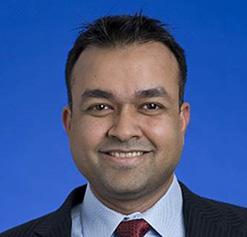
Once discussed in hushed tones due to their transactional links to the dark web, cryptocurrencies are the new shining star of the investment world with countless investors wanting to capitalise on the explosion in value of digital assets.
According to a survey conducted by the Discovering Institutional Demand for Digital Assets, a little over one-third (36%) of professional investors already have blockchain-inspired assets in their portfolios either through direct investments in cryptocurrencies, stable coins and security tokens, or through funds, structured products or futures.
One of the most well-known branches of cryptocurrency, Bitcoin, has bled into many a portfolio with structured products
The key to defined outcome indices/ETFs is the availability and liquidity of the options on the underlying
providing an ideal entry point to invest in this highly volatile asset class.
The European market has taken the lead with a number of crypto exchange-traded products (ETPs) linked to Bitcoin and other cryptocurrencies, as well as other derivative instruments since 2019.
In 2019, Six Group listed a ripple-based exchange-traded product (ETP) issued by Amun and crypto firm GSR launched the GSR Bitcoin Halo Option exchangetraded notes (ETNs) adding to two other digital asset products, including the Cryptocurrency Variance Swap and the Bitcoin Accumulator.
In late 2019, Frankfurt-based crypto asset management start-up firm Iconic Funds launched an exchange-traded note (ETN) for Bitcoin of up to 100 million
notes, tracking the NYSE Bitcoin Index. The notes feature a callable/putable structure allowing the issuer to call the ETN and investors to put the ETN on a quarterly basis.
Now, the increasing buzz about the possibility of Bitcoin exchange-traded funds (ETFs) being introduced to the industry not only begs the question of why it does not already exist, but also how a structured outcome wrapper would be received.
STRUCTURED OUTCOME ETFS
According to Vinit Srivastava (pictured), chief executive officer and co-founder of index provider MerQube, the idea of a structured outcome crypto ETF makes sense because the high volatility can be used to buy some protection and still participates in a lot of the upside.
24 25 www.structuredretailproducts.com www.structuredretailproducts.com FEATURE SRPInsight FEATURE
“The key to defined outcome indices/ ETFs is the availability and liquidity of the options on the underlying - so far, all the ETFs that have been launched have used underlying that have very liquid and deep options markets. This is important because the way the outcome is delivered is by holding custom options of different tenors,” says Srivastava.
As cryptocurrencies gain momentum, key industry players have brought innovation to the forefront and are now diversifying options that are available to investors.
Blockchain asset management firm Invictus Capital rolled out a new Bitcoin offering in September 2020 which was designed to outperform the cryptocurrency by utilising options and lending strategies to deliver downside protection and yield.
Most recently, the advanced crypto derivatives exchange (ACDX) announced the launch of the world’s first crypto structured product known as the bull bear strike token (BBS). Offering uncapped profit potential with capped risk, the BBS comes with high leverage levels like perpetual futures with a simple trading nature.
Andy Cheung, ACDX’s founder and executive chairman, says that crypto derivatives are still lagging behind.
“The most popular derivative products in crypto now are perpetual and quarterly futures, but in the grand scheme of derivatives products in the traditional market, futures are still a very small piece of the pie,” he says.
Developing a structured outcome crypto ETF is in not currently in the firm’s pipeline, though it has not completely been ruled out.
“There are quite a lot of different structured products in the traditional industry, and most of them serve the same purpose - simplifying your trading strategy,” says Cheung.
With institutional funds flowing into the industry, the development and mass adoption of Bitcoin and other cryptocurrencies is unavoidable.
REGULATORY OBSTACLES
While the concept appears to be a golden opportunity for investors, a pivotal hurdle comes in the form of the Securities and Exchange Commission’s (SEC) reservations towards the combination of cryptocurrency and ETFs.
Gregory King, chief executive officer and co-founder of digital asset firm RexShares notes that from a regulation perspective, a structured outcome crypto ETF may not be well received.
“Bitcoin derivatives would have to be embedded which barely exist and the SEC wants to know what the industry is using to gain exposure - some would make use of Bitcoin futures,” says King. “They also want to understand the liquidity of the instrument that an investor is using.”
The futures and options market needs to become much more sophisticated before a Bitcoin structured outcome ETF comes to the market. He believe that a delta one product is going to come well ahead of any structured outcome product.
RexShares previously researched a way to bring an ETF to market and applied for several Bitcoin ETFs in 2017. The SEC was not considering those applications and it appears that they still aren’t.
Matt Kluchenek (right), a partner in law firm Mayer Brown’s banking and finance group, points at the SEC’s concerns about underlying market pricing and the impact that would have on the credibility of an ETF.
“The SEC has focused on a lot of other priorities outside of the cryptocurrency space, and at times has appeared to ‘begrudgingly’ become more involved from a regulatory perspective as the market has pulled the agency in that direction,” he says.
In contrast, the Commodities Futures Trading Commission (CFTC) has been quite progressive in terms of conveying its position on cryptocurrencies to market participants. It has embraced a number of crypto futures contracts, as well as in the event of the contract being based on underlying market pricing.
Upon US President Biden’s appointment of the SEC’s new chairman Gary Gensler, the watchdog is expected to focus more significantly on the regulatory treatment of crypto products.
“Gensler is likely to bring more clarity and order to the space, though the SEC and CFTC have gone to great lengths to educate consumers and credit goes to both agencies,” says Kluchenek. “Clients are really eager to hear about the different types of products that they can trade within the crypto asset class, whether they’re tokens, coins, securities, ETF futures etc.”
Kluchenek believes that a structured outcome ETF product would perhaps create more discussion for a relatively risk-averse agency and the addition of that component would likely make it a harder sell.
Founder and chief executive officer at Invictus Matthew Finlayson says that the demand for such a product coming from both institutions, as well as retail investors is likely to sway regulators.
“Investors are more interested in getting exposure to this new asset class and that’s certainly a prerequisite for anybody paying attention to it,” says Finlayson.
The second factor required for regulators to get comfortable with the asset class is engagement with companies that are in the space, different crypto exchanges or custodians that are exploring the crypto asset space as well.
“That is happening behind the scenes, so I think it won’t be too long before we see a crypto ETF or a structured ETF in the crypto space, but the engagement is what’s needed between market participants as they currently exist and regulators—that just happens quite slowly,” says Finlayson.
OUTSTANDING ISSUES
The last time the SEC cautioned the market about the use of cryptocurrencies in ETFs was in 2018. According to a letter penned by Dalia Blass, former director of the division of investment management at the SEC, there are several questions
and issues that may arise as a result of introducing crypto related ETFs.
These include matters of valuation, arbitrage, liquidity, custody and potential manipulation and fraud. The letter brings up the question of how differences among various types of cryptocurrencies would impact funds’ valuation and accounting policies.
‘A key feature of open-end funds, such as mutual funds and ETFs, is daily redeemability. Funds must maintain sufficiently liquid assets in order to provide daily redemptions’ states the letter. ‘What steps would funds investing in cryptocurrencies or cryptocurrencyrelated products take to assure that they would have sufficiently liquid assets to meet redemptions daily?’
The letter highlights the input of former SEC chairman Jay Clayton, who noted that there were concerns that cryptocurrency markets, ‘as they are currently operating, feature substantially less investor protection than traditional securities markets, with correspondingly greater opportunities for fraud and manipulation’.
‘The Commission has also discussed concerns relating to the risk of fraud and manipulation in cryptocurrency markets in orders denying exchange proposals to list the shares of commodity trusts that would hold cryptocurrency,’ he said in the letter. On the other side of the pond, the UK Financial Conduct Authority (FCA) banned
the sale of derivatives and ETNs that reference certain types of crypto-assets to retail consumers, in October 2020.
COVID-19 & CRYPTOS
Cryptocurrencies as an asset class have experienced a turbulent existence in the markets though a larger volume of investors is now considering it as a valid option.
Guillaume Le Fur (pictured), founding partner and chief executive officer of index provider Compass Financial Technologies notes that a turning point in the switch of attitudes was the Covid-19 pandemic.
“Central banks injected massive liquidity into the monetary system, so sovereign debts increased and will continue to increase to finance the crisis. That mechanically devaluates traditional currencies versus cryptocurrencies,” he says. “In the end, there is no real face value for the Euro or the US dollar. Conversely, crypto assets are limited in market cap, making it an interesting inflation hedge.
“With the pandemic, Bitcoins do not necessarily increase intrinsically but the value of your US dollar versus Bitcoin decreases. So, more investors are now starting to treat crypto an asset class to protect versus global currency devaluation.”
EUROPEAN ACTIVITY
In the European market, mainly in
Germany and Switzerland, crypto assets are going beyond trackers such as Vontobel’s VONCERT on Bitcoin Cash, VONCERT on Bitcoin, which have already matured or the most recent Bitcoin ETP launched in mid-2020 by Swiss crypto manager FiCAS AG, and are now being deployed via traditional structured products - even as reverse convertibles and autocalls.
Leonteq launched the first ever reverse convertible linked to the price of Bitcoin in Q3 2019 as part of its suite of cryptocurrency products on the Six Swiss Exchange
Most recently, London-based non-banking issuer Marex Financial products the first ever autocallable notes linked to Bitcoin with downside protection to capitalise on increasing demand from institutional investors.
Currently, SRP data shows that there are 3,170 live products making use of multiple cryptocurrencies that include Bitcoin, Litecoin, Ripple, Ethereum, and Bitcoin Cash.
There are also 690 products linked to the Bitcoin Group and one to the SEBA Crypto Asset Select Index.
The main providers of cryptocurrencylinked products are Vontobel (2,401), and Leonteq across five markets including Germany/Austria, Switzerland, Denmark, and Sweden.
The last time the SEC cautioned the market about the use of cryptocurrencies in ETFs was in 2018
26 27 www.structuredretailproducts.com www.structuredretailproducts.com SRPInsight FEATURE FEATURE
CACIB: our ESG offering will resonate in the UK
Crédit Agricole Corporate & Investment Banking (CACIB) has strengthened its global markets structuring & product development over the last 18 months.
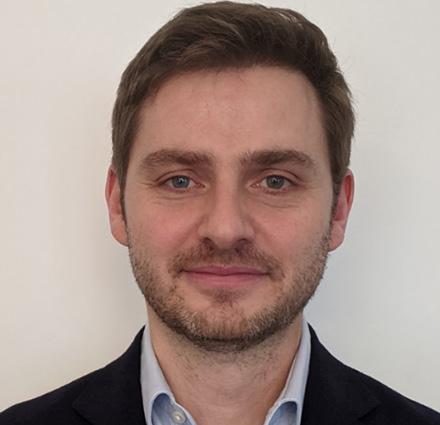
These include a number of senior appointments in Asia, and the hire last year of Aurélia Lamorre-Cargill as global head of structuring and product development, in London.
In 2019, the volume of structured products traded with clients within its equity distribution activities (not including fixed income global markets transactions) amounted to €3.4 billion. Earlier in 2020, the French bank reported record inflows in its asset management business and became the number one structured product issuer in France in Q3 2020.
“We have been working on the rebuild of our equity derivative activities since 2019 with the creation of dedicated trading, structuring and sales teams, and a new strategy,” says Gael Riboulet (pictured), global head of structuring and sales.
“Obviously, the events of 2020 have delayed some of the initiatives we had planned but we’re on track and even slightly ahead on our roadmap.”
The French bank has increased its activities and issuance significantly across several markets over the last 12 months.
Despite markets volumes going down by around 30% we have more than doubled our market share
Gael Riboulet, Global head of structuring and sales, CACIB
It also continues to have a strong foothold in the global structured products market as suggested by the number of live products brought to market by Crédit Agricole-linked issuing entities such as CACIB, Crédit Agricole Mutuel du Nord Est, and Credit Agricole Life Insurance Japan.
At the end of 2020, the volume transacted on structured products including public issues, private placements and even certain derivative transactions dealt with external issuers or funds rose to €5.46 billion at a time when markets globally were contracting.
“We are focusing on markets and jurisdictions where we are relevant and leverage our branding such as our domestic markets (France, Benelux and Italy) where the group has retail activities we can capitalise on,” says Riboulet. “We also want to grow our market share in the UK, Switzerland and the Nordics where we believe [Crédit Agricole CIB] can bring added value and relevant expertise to our clients.”
Beyond Europe, CACIB also has plans to rollout these activities in some Apac markets such as Japan where it has a
strong footprint and are among the top foreign banks covering the public space.
“Despite markets volumes going down by around 30% we have more than doubled our market share, and continued to serve existing and new clients,” says Riboulet. “ESG has been key for us in 2020, we issued a number of successful ESG structured products.”
CACIB has a track record in green bonds and sustainable investing - it launched a range of green structured products including the first green investment solution for Italian investors under its Climate Action Green Notes programme in 2018.
“We have taken advantage of the strong traction of these topics, in addition to the need for diversification from distributors and investors seeking to hold other paper and credit risk,” says Riboulet.
The impact last year’s events had on a number of issuers will mean there will be opportunities to grow the bank’s structured products business.
“We expect some changes in the competitive landscape as other manufacturers review their activities or retreat from the market,” says Riboulet. “Our goal continues to be to grow our market share in a sustainable approach and build on the work we have done in 2020. We are taking a step by step approach to become a relevant player in the markets we are focusing on.”
UK FOCUS
The UK market has been a focus of CACIB’s strategy. The bank expanded its equity derivatives coverage among private
banks, retail plan managers, discretionary asset managers, as well as institutional clients in early 2020. It also acted as the manufacturer for new structured products brought to market by Meteor (seven products) and Dura Capital (two), after a 13year absence – in Europe, CACIB hedged 38 structures in Italy worth €181m and 14 products in Spain worth €155m.
“It’s early days for us in the UK,” says Jean-Victor Demaison (right), head of Emea ex-FraBeLux sales for equity investment solutions. “There is scope for us to increase our footprint in the UK because there is a need for new paper and demand for credit diversification. Some investors are overexposed to some of the existing issuers and welcome the diversification we can provide.
“Overall, the feedback we have received is positive. We can capitalise on [Crédit Agricole CIB’s] presence in London where the bank has been active in capital market activities for many years.”
Although the UK structured products market cannot be compared to France or the Nordics when it comes to ESG, there is increasing awareness and appetite for sustainable investments.
“When we speak to clients and explain what we do with our clients in other countries we’re getting a positive response,” says Demaison. “The pandemic has been a game changer [in that] it has accelerated some market trends and increased awareness among investors around sustainability. Things are changing and we are a part of that change. We see more and more requests compared to just a year ago – we are well positioned to capitalise on that demand and respond to the needs of our UK clients.”

The pandemic has increased awareness among investors around sustainability
Victor Demaison, Head of Emea ex-FraBeLux sales for equity investment solutions , CACIB
28 29 www.structuredretailproducts.com www.structuredretailproducts.com SRPInsight FEATURE | Q&A
FEATURE Q&A
CACIB: 2020 has put structured products in a good light
In the second part of the interview, Gael Riboulet, global head of structuring and sales, and JeanVictor Demaison, head of Emea ex-FraBeLux sales for equity investment solutions, at Crédit Agricole Corporate And Investment Banking (CACIB) talk about the underlyings and products that will help the bank grow its footprint and market share.
The European structured products market has seen a significant influx of indices addressing the dividend risk.
Taking into account the dividend crisis triggered by last year’s market volatility, do you think this kind of index will continue to increase their weight in the market?
Gael Riboulet: Decrement indices have been a trend in Europe over the last few years mostly in countries and on underlyings that became one-way markets because everybody is doing the same products and underlyings. With this approach, you end up with long-term dividends that are priced at a level that is way below what they should be.
This is clearly not for the benefit of the end investor because the dividends are priced at levels that are not fair. Decrement Indices then make sense because the issuer does not have to manage that dividend risk which as we saw in 2020 can be high and pass those savings to the end investor via better terms and a higher potential return.
After 2020, decrement has become even more relevant and significant in terms of implied vs realised. We don’t do decrement for the sake of using this mechanism but because we believe it is an efficient way to manage this risk and deliver value to the end investor.
Quantitative investment strategies and ESG are also on everybody’s minds when it comes to new underlying assets in the structured products market. What is your view on these?
Gael Riboulet (below-right): QIS is also helping to bring innovation to the market and value to investors. When you look at the structured products market it has gone through three rounds of innovation: the first one which ended with the global financial crisis was focused on payoff innovation; the second one on underlying innovation (bespoke, thematic, strategic, factor); and the third on the wrapper but with some extra layers such as ESG – so we saw how green bonds opened the door to index-linked structured bonds.
On the ESG side, we are also incorporating new features
and expanding our offering – most recently we launched a charitable or positive impact feature so that some of the proceeds go to charities determined by the end investor/the distributor and the issuer. On top of the financial performance of the product, we’re offering clients the chance to participate in, and fund ESG projects. We are putting significant focus on this because clients are also demanding a holistic approach to ESG.
Some markets seem to be embracing new underlyings to address pricing challenges, improve the optics of products and deliver value to investors. Do you think the UK market will open up to these underlyings and move beyond the FTSE100?
Jean-Victor Demaison: There has been a bit more demand for alternatives to traditional indices in the UK since mid2020. Given the current pricing on price return indices it is natural for the market to look for alternatives such as fixed decrement indices that can offer better terms.
Those indices eliminate the uncertainty related to future dividends which means less risk for banks and therefore less hedging related costs. In other words, products should be better value for money for investors.
It also allows investors to purchase structured products linked to new themes, including ESG. Our offering is structured around Green and ESG benchmarks. Most of them include a fixed decrement mechanism. We also see interest from more institutional clients for other features such as risk control.
In any case, these features (fixed decrement, risk control) are only a means to deliver the right product our clients.
We have seen an increase in the number of funds of structured products in the UK and other markets such as the US, Ireland and the Netherlands. Are you considering this wrapper as you build your offering in Europe?
Jean-Victor Demaison: Each market has its specificities and
we see structured products used for different needs across markets. However, all markets are different and a product or a wrapper that works and is very popular in one market does not necessarily work in another.
Up until five years ago, the only wrapper used to deliver structured products in the UK was the plan or note format whereas now we have open-ended funds that invest exclusively in structured products. Those funds have been building performance, track record and have been growing their AUM significantly over the last three years or so, including in 2020. This is the kind of initiative we think will help grow the market, make structured products available to more investors and as a result continue to be an area of growth going forward for the UK industry.
The fund wrapper allowed our clients to grow their client base and target clients that had not bought structured products before. An open-ended strategy in a fund wrapper has different liquidity requirements than a traditional structured product so you are also targeting different types of investors.
The actively managed certificate wrapper for instance has been in the market for many years but with a narrower usage. It does not have the same scalability as the fund wrapper. In other markets it has a more significant presence though not mainstream: usually it is used by our clients to meet specific needs or deliver niche or thematic strategies
Gael Riboulet: The fund wrapper can add flexibility as you can move beyond a traditional formula-based structured product which has usually a one to one relationship with the
performance of the underlying. When you have a fund, you can have an active management element which gives the product a different, more adaptative kind of profile.
With fund of structured products, you can combine the alpha provided by structured products with the alpha provided by the asset manager. The back-testing of strategies that would have rolled standard structured products for a long time suggests that they would have outperformed total return indices.
What are the challenges ahead for CACIB and what opportunities are you looking for to expand your market share?
Gael Riboulet: Considering the current environment, we need to focus on working with clients to address their concerns. Risk is a very important component to consider in the current context.
We think the focus will continue to be on underlyings that can provide equity exposure and have risk management and smart beta features that can minimise the impact of volatility or dividends. ESG products fall in that category as well.
The market events of 2020 have put structured products in a good light as they have performed and delivered a performance that investors could not have achieved with traditional asset management products. Investors who understand that structured products are about monetising downside risk did very well in 2020. As a manufacturer our goal is to deliver products that can extract value from the markets regardless of where they are.
The focus will be on underlyings that can provide equity exposure and have risk management and smart beta features
Gael Riboulet, Global head of structuring and sales, CACIB
30 31 www.structuredretailproducts.com www.structuredretailproducts.com SRPInsight FEATURE | Q&A
FEATURE Q&A
FinIQ sets MIP world record, aims at US$100bn
FinIQ has a hit major landmark in terms of volumes of structured products traded on its FinIQ EQ Connect platform.
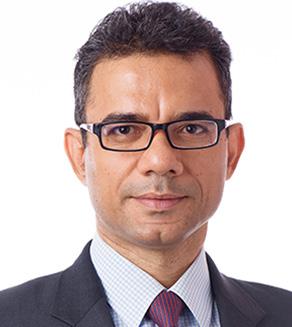
FinIQ has taken the lead in the multi-issuer platform (MIP) space after transacting some US$50 billion in 2020. It also overtook the biggest multi-issuer platform in the worldVontobel’s Deritrade - which has been transacting around US$12-15 billion of volume per year.
“We already recorded over US$18 billion on our platform in 2019 and this was an indication that we were on the right path. We can confidently say that, to our knowledge, no other platform is doing this kind of volume - we lead by a large margin,” Mahesh Bulchandani (pictured), FinIQ’s CEO and director for Europe told SRP.
The fintech’s landmark achievement follows several high profile developments in 2020 including the addition of new dealers to its Market Connect Trading Platform, an agreement with a UAE Bank to replace their Swissmade Wealth Core System, as well as the signing of BBVA which went live in Latin America and Europe with FinIQ’s SPConnect cloud platform. Several new
clients were onboarded to FinIQ’s EQ Connect, FX Connect, FXD Conect and SPConnect platforms.
Bulchandani points at four factors behind the growth in volume: the increase in structured product activity across markets especially in the Apac market where there has been a huge growth in volumes. FinIQ’s expansion of its payoff coverage and further integration to other upstream and downstream systems of private banks have also made it easier for bankers and dealers to trade through FinIQ. Finally, the addition of a number of new clients brought additional volume to the platform.
“A number of products that were being done manually in 2019 have been automated and are now going through the platform,” said Bulchandani. “We have benefitted from a surge in activity around structured products to more than double the volume going through FinIQ. We had a pretty good run this year in terms of adding new sell- and buy-side clients to the platform.”
FinIQ has now more than 20 issuers providing pricing on the platform and about 15 private banks using the platform to price and transact products for their clients.
“Most of the new clients come from the Middle East and Asia - they are not Asian banks but global banks seeking to automate their activities in the region,” said Bulchandani.
ENHANCEMENTS
In 2020, FinIQ’s EQ Connect platform added memory knockout autocallables, Phoenix structures, expanded the coverage of Hong Kong ELI product, and included total return swaps and structured deposits.
According to Bulchandani, these additional payoffs are expected to bring more volumes in 2021.
“Small improvements can have a big impact in the volumes especially if those improvements come in areas where there is increasing demand as it gives the platform more scope to deliver what the market wants,” he said.
As an established fintech player FinIQ is also taking advantage of the fragmentation around structured products platforms which is not only reflected in the number of different platforms in the market but on the capabilities of each of those platforms.
“The feedback we get from clients is that having to use different platforms for different asset classes is not an efficient way to operate so we have focused on adding functionalities and expanding the coverage to those payoffs and underlyings that are driving activity in the market,” said Bulchandani. “Our goal is to have a holistic platform that can help clients to use it as a one-stop-shop.”
Areas such as FX where there is little coverage out there and can give a significant edge and competitive advantage against other providers which have not such capabilities are on FinIQ’s short-term plans.
“Some of the clients we have onboarded have a specific focus on some of these products (FX and FX derivatives) and being able to serve those clients means that we could be talking about another US$20+ billion going through the platform on top of the US$50 billion for equity linked structured products. We hope that in 2021 we can get close to US$100 billion mark,” Bulchandani said.
View from the top: suitability and compliance have become a focal point
Following FinIQ’s 2020 record volume of structured products traded on its FinIQ EQ Connect platform, the fintech’s CEO and director for Europe, Mahesh Bulchandani, talks about the tools and functionalities that drove activity in 2020, how the platform’s modular offering is helping to respond to specific needs from clients, and what products will bring new trading volume in 2021.
“Some clients get our pricing and execution tools and functionalities, but some others also want pre-trade and/or posttrade functionalities,” says Bulchandani. “We really can adjust the offering according to the budget and the tools they need.”
What tools /functionalities were on demand in 2020?
Mahesh Bulchandani: Suitability and compliance are becoming more and more important because of new regulations so we have seen a significant uptake of pre-trade tools but credit is also a focal point because in the Middle East and in Asia investors borrow money to invest so we provide real time credit checks – this module is being used by a number of banks for credit and suitability checks.
Some other clients have their own pre-trade tools, so we simply link FinIQ to their internal pre-trade capabilities. We have the flexibility to plug our own engine or to use our clients existing engines and plug our tools.
Post-trade is also an important part of our offering. On one hand we provide tools for private banks to independently monitor the structured assets invested in the market, and for that we get market data from Refinitiv, Bloomberg, FactSet etc. We give the client the choice of the data they want to use according to their preferences as the different data providers have their strengths and weaknesses.
With our life cycle monitoring tools, large private banks can monitor their clients’ portfolio, without having to rely on the data provided by the issuers to get notifications about market events. We are working on an updated version of our posttrade tools which will go live in Q2 2021.
Platforms seems to be addressing different needs in different jurisdictions. What’s your take on the US market?
Mahesh Bulchandani: The US market is different because at the moment platforms there are not really being used as click
Suitability and compliance are becoming more important because of new regulations
Mahesh Bulchandani, CEO and director for Europe, FinIQ
32 33 www.structuredretailproducts.com www.structuredretailproducts.com SRPInsight FEATURE | Q&A
FEATURE | Q&A
and trade hubs. The US market is focused on calendar deals and there is no emphasis on click and trade. This is a bit of a surprise because with calendar deals the private placement part of the market is being under-serviced. We think this will change, as large brokers and private banks start to focus on big ticket investors.
Currently US Investors that can invest US$500k on a product on their own timing are not being served by platforms – these investors have to wait for one month until the calendar deal is ready for issuance on the platform and in the interim they could be losing an opportunity.
Platforms are no longer just about streamlining and automating functions and processes but also about providing the colour and granularity distributors need to understand and navigate the market.
How would you describe the competitive landscape in Europe and Asia?
Mahesh Bulchandani: In Europe, the likes of Vontobel and Leonteq dominate because they are used by medium size banks, brokers, and asset managers. Large private banks such as UBS, CS, Julius Baer in Europe don’t use these platforms, so we think there’s scope to bring a non-bank affiliated platform to serve these large private banks. Some of those PBs have developed or are developing their own tools but obviously this takes time and investment - that is where third party platforms like FinIQ can help in delivering quick time to market at low cost.
Asia is in a different league altogether in terms of automation. There is now a clear evidence of the benefits of full automation. In Europe, automation is still patchy, and the pressure to demonstrate best execution has increased. For what we see, most of these banks do their deals manually and then use order trail type of tools (i.e. RFQ Hub type of tool to show best execution). We think that Europe could follow the Asian model and go for full scale automation and streamlining of processes.
There seems to be a shift towards the Cloud from some providers. What’s FinIQ’s preferred set-up?
Mahesh Bulchandani: Our platform has been on the cloud right from the beginning and we see now a number of clients taking our cloud offering. There are other clients that want to localise the customer data on the platform, so for those clients we keep just the market connectivity on the cloud.
The confidential customer data is kept on a FinIQ local engine
Platforms are no longer just about streamlining and automating functions and processes
- they can store the confidential data (address, risk appetite etc) about their clients and that data is not even visible to us. Broad market discovery and execution remains on the cloud. We call it Hybrid Implementation. We currently have three clients on Hybrid and everyone else is on the cloud for structured products. For fixed income and funds, we will bring them to the cloud in 2021.
What are your plans for 2021? Do you plan to deliver new capabilities such as Machine Learning or Robo Advisory? Is there value for platforms in serving non-flow products?
Mahesh Bulchandani: We already have certain tools that use machine learning and we are developing new functionalities. Robo advisory is not a focus at the moment because we don’t think you can provide the same level of advice via platforms for the pure private banking / high net worth client. However, as we get more clients serving the retail market, we see robo advisory as an extra tool to serve retail clients and give them the tools they need to invest in diversified portfolio of investment products including structured products.
We have a module called Non-Flow Products – these are structured products that are individually not high volume but when you combine them, they have a high volume. We have two clients using this module and we want to make it smoother and easier to use so that we can expand the module and target other clients. So, a big plan for us in 2021 is to focus on non-flow products.
Extending the efficient frontier
Regularly monitoring how a portfolio is performing is how advisers and investors help ensure that the best long-term outcomes are achieved.

The key principles that underpin how portfolio management is approached today are known as the Modern Portfolio Theory (MPT). This is an important contribution to investment analysis that was first developed by the famous academic Harry Markowitz seventy years ago.
Put simply, it aims to show that given all the different assets in an investment universe, there is an optimal portfolio for any investor depending on their level of risk and in fact for any investor this portfolio consists of some proportion of cash and the “market portfolio”.
Arriving at the best portfolio might seem a daunting task when a universe of thousands of potential investments need to be analysed but is made manageable by one main simplifying assumption. This is that all investments are lognormally distributed, meaning that their returns are normally distributed with the traditional bell shape curve. This
assumption holds reasonably well for most stocks, bonds, currencies, indices, funds and ETFs.
The reason that this theory has been so universally adopted is that it simplifies the analysis enormously and keeps the whole problem tractable in terms of running regular analysis. In the early days of computer power, this was a critical requirement and is still a big advantage today.
The reason why the log normal assumption helps is because it removes the need to collect any more data on assets other than expected return, volatility and correlations. In addition, any combination of log-normally distributed assets are themselves approximately log-normally distributed, and so it is easy to measure thousands of candidate portfolios.
The optimisation problem then can be formulated as the best portfolio that an investor should pick given their risk appetite. Since expected return is the only measure of the portfolio, an
34 35 www.structuredretailproducts.com www.structuredretailproducts.com SRPInsight FEATURE | Q&A
EXPERT VIEW
investor will seek to maximise return for their acceptable level of risk. The other way to formulate this is to minimise risk for a given target return.
The main data requirements are to calculate the expected return and volatility of any given asset and the correlations between any two assets. Estimating these parameters accurately has challenges. For volatility and correlation historical measures are used most commonly, leaving the hardest task to determine reliably the key input of expected asset return.
Creating a chart of all investment combinations gives a range of outcomes from which a curve can be drawn known as the efficient frontier. When the risk-free asset (high quality cash or very short dated bonds) is included the efficient frontier converts into a line connecting the risk-free asset to the market portfolio.
RISK LEVEL
This therefore arrives at the solution of choosing the desired level of risk between the risk-free asset and the market portfolio. This market portfolio is the one that maximises the risk adjusted measure known as the Sharpe ratio, a concept that was added to MPT a decade or so later.
All three properties of an asset will determine whether it will be included in the optimal market portfolio – high expected return and low volatility is clearly important, as is low correlation with other assets to help achieve risk reduction through diversification.
By way of example, suppose the market portfolio has a volatility of 15% and expected return of seven percent, and that the risk-free rate in the market is one percent. For an investor whose risk limit is equivalent to 15%, their optimal portfolio is directly the market one, with the return of seven percent. If the investor is lower risk and can only tolerate nine percent volatility then the best choice will be 60% in the
market portfolio and 40% in the risk-free asset (cash), giving an expected return of 4.6%.
Modern Portfolio Theory was a ground-breaking concept that still has a lot of usage today. It is best thought of as a framework rather than a universal solution. It guides fund managers into broad asset allocation decisions, but its simplifying assumptions can have limitations. Quantitative strategies, hedge funds, smart beta and other disciplines all search for advantages outside what could be envisaged in the mean variance framework.
One major drawback of MPT is that it does not focus on avoiding losses, but on minimising volatility. By definition it is loss that hurts investors and so the alternative downside measure known as the Sortino ratio was created. The mathematics gets more complicated and so the Markowitz’s original formulation remains relevant and popular because of its simplicity.
Another problem that has been examined by many is how to extend the idea of MPT to non-symmetric assets where the normal distribution assumption breaks down. One important example of this is option and structured product payoffs.
Access to these instruments will extend the universe and so it is interesting to see what this class of derived investments can contribute, and in what circumstances they should be included within an optimal portfolio.
The two extensions of downside risk control and nonlinear assets naturally go together, since instruments such as structured products are designed for risk reduction and limiting losses. We will consider such extensions for a more sophisticated approach with different building blocks such as structured products in a follow-on article.
Disclaimer: the views, information or opinions expressed herein are those of FVC, and do not necessarily reflect the views of SRP.
Downside risk control and non-linear assets naturally go together, since instruments such as structured products are designed for risk reduction and limiting losses
In this wrap, we look at a selection of structured products with strike dates between 1-31 January 2021.
Product wrap: JPM kickstarts 2021 with Covid recovery notes EUROPE
Deutsche Bank distributed Global Innovative Technology Note 2030 in Belgium. The 10-year, 100% capital protected mediumterm note (MTN) offers a return at maturity that is equal to the performance of the Nasdaq Yewno Global Innovative Tech Ex EUR ER 5%-index, capped at 25%. The index was launched in February 2020 and developed by Nasdaq in collaboration with BNP Paribas. It tracks 100 shares of leading tech companies, selected from a universe of 9,000, for which the patent data is analysed by Yewno – a provider of machine learning and artificial intelligence solutions. The product is listed in Luxembourg. Total costs are included in the issue price of 102% and will not be higher than eight percent.
Groupama is marketing Porphyre Vert Janvier 2021 in France. The eight-year medium-term note can be accessed via a life insurance contract and its return is tied to the performance
Europe: Top 10 issuer group by issuance 1-31 January 2021*
of the MSCI Europe Select Green 50 5% Decrement Index. The index is based on the MSCI Europe, its parent index, and includes large and mid-cap securities across 10 Developed Markets countries in Europe. The note, which is listed in Luxembourg, is a green bond issued via Crédit Agricole CIB for an amount of €100m. The proceeds are used to finance or refinance new or existing loans and investments in green assets such as renewable energy, green real estate, clean transport, and water and waste management.
In Sweden, Garantum teamed up with Goldman Sachs for Sprinter 5G Smart Bonus x2 nr 4038, a five-year certificate linked to a basket composed of Advanced Micro Devices, Ericsson, Intel, and Nokia – four information technology companies that aim to profit from the implementation of the wireless 5G network.
*Excluding
Société
36 37 www.structuredretailproducts.com www.structuredretailproducts.com SRPInsight EXPERT VIEW
PRODUCT WRAP
0 20 40 60 80 100 120 140 160 Crédit Agricole Goldman Sachs Rai eisen Switzerland
Paribas
Credit Suisse LBBW
Bank
BNP
Santander
DZ
Générale
Bank
Deka
flow- and leverage
StructuredRetailProducts.com
products Source:
The product offers 100% capital return plus either a coupon of 70%, or 100% of the rise (whichever is greater), providing the basket closes at or above 100% of its strike level on 21 January 2026. The product is listed in Stockholm and issued at par. A fee of 2.5% is added to the issue price.
UK investment company Tempo Structured Products collaborated with Société Générale for the launch of FTSE 100 FDEW Long Growth & Kick-Out Plan. The product has a 10-year
NORTH AMERICA
Bank of Montreal issued Callable Income Notes Series 1848 (CAD) F-Class in Canada. The note has a maturity of seven years and is tied to the performance of the Solactive MicroSectors US Big Banks 2.5% AR Index. The index tracks the price movements of a portfolio of stocks tracking the top 10 US stocks from the banking sector with the largest free-float market capitalisation, subject to an adjusted return factor of 2.5% pa. If the index closes above 70% of its strike level on the annual valuation date, the product pays a coupon of 9.72%.
J.P. Morgan issued one-year Insight Notes on the J.P Morgan Covid-19 Recovery Basket in the US. The basket comprises 64 equally weighted stocks of US listed companies that may
maturity, but there is an early redemption option after five-years, providing the FTSE 100 Fixed Dividend Equal Weight Custom Index closes at or above 70% of its strike level on 15 January 2026. On the end date, the plan will generate a return of five times the amount by which the index closes above 80% of the start level. The maximum potential return is capped at 150%.
The plan is issued via SG Issuer and James Brearley acts as the administrator. Total charges for the life of the plan are expected to be approximately 3.75%.
LATIN AMERICA
XP Investimentos launched XP Man Alta Alavancada in Brazil. The five-year deposit participates 200% in the upside performance of Man AHL Target Risk D EUR, a managed fund that aims to generate growth over the medium to long term by providing dynamic long only exposure to a range of assets and to provide an excess return stream with a stable level of volatility regardless of market conditions
ASIA PACIFIC
benefit from a recovery from the pandemic. The product offers a capital return equal to the performance of the basket, deducted by one percent. There is a selling commission of US$15 and the estimated value of the notes is set at approximately US$966 per US$1,000 principal amount note.
Also in the US, Jefferies sold US$2m worth of callable contingent interest barrier notes linked to a worst-of basket. The three-year securities pay a quarterly coupon of 7.05% per annum if the Nasdaq 100, Russell 2000, and Eurostoxx Banks each close at or above 70% of their respective starting levels on the valuation date. Toronto Dominion Bank is the issuer. There is an underwriting discount of 4.075% and the estimated value of the notes set on the pricing date was US$890.10 per note.
Bank of China introduced Target Rate Investment 6WH in Hong Kong SAR. The product is linked to the appreciation of the US dollar relative to the Hong Kong dollar. If the fixing rate of the currency pair is equal to or below the target rate (7.7200 – expressed in amount of HKD per USD) on 2 July 2021, investors will receive interest at the rate of 0.45% pa for the investment period. Otherwise, the interest rate is set at 0.35% pa.
Kyobo is distributing ELB 10855 in South Korea. The product is linked to the local Kospi 200, has a six-month tenor, and is also available via NH Bank. If the level of the index is at or above 200% of its initial level at maturity, the product offers a capital
return of 100.3273%. Otherwise, the return is 100.3223%.
Akatsuki Securities accumulated sales of JPY0.63 billion (US$6.1m) with EB M20220719 in Japan. The 1.5-year product offers a fixed coupon of five percent pa. If the underlying shares of Kakaku and Mitsui Fudosan close at or above 105% on the first quarterly observation date, the product terminates and offers 100% capital return. For subsequent quarters, the knockout level is deducted by one percent for each quarter elapsed. The structure is issued via Svensk Exportkredit and J.P. Morgan Securities acts as the derivatives counterparty.
Asia Pacific: top 10 issuer group by issuance 1-31 January 2021* *Excluding
38 39 www.structuredretailproducts.com www.structuredretailproducts.com SRPInsight
PRODUCT WRAP
0 100 200 300 400 500 600 RBC CIBC BMO Financial Credit Suisse Barclays Citi Morgan Stanley Goldman Sachs J.P. Morgan UBS Americas: Top 10 issuer group
*Excluding flow- and leverage products Source: StructuredRetailProducts.com PRODUCT WRAP
by issuance 1-31 January 2021*
0 200 400 600 800 1,000 1,200 Bank of China Morgan Stanley Nonghyup Mirae Asset Credit Suisse KB Financial Group Samsung Securities Shinhan Financial Group DBS HSBC
flow- and leverage products
StructuredRetailProducts.com
Source:
People Moves


very strong links with their desks in Switzerland. We want to leverage and build on those relationships,” said Bonacci.
FOCUS SHIFT
According to Wood, no technology transformation is easy but technology providers can help private banks to make that transition.


The French bank has also announced the appointments of Alain Gallois as global head of coverage and head of Emea (excluding France); Bénédicte de Giafferri as global head of real assets; and Fabrice Croppi as global head of investment banking. All three alongside Haize report to Anne-Christine Champion and Mohamed Kallala, co-heads of corporate & investment banking, who were charged in November 2020 with deploying the bank’s strategic plan.






































Luma appoints former SocGen chief

“The transformation journey is just beginning for private banks and wealth managers, and issuers as well,” he said. “The stabilisation of the regulatory environment has triggered a shift towards operational efficiency and the scalability of the structured products business through different distribution channels.
US multi-issuer structured products platform Luma Financial Technologies makes inroads into the European market with the opening of an office in Switzerland, and the appointment of the former global head of electronic business equity, derivatives and cross asset at Société Générale.
Luma has opened an office in Zurich to offer wealth managers and private banks access to its structured products platform. The platform is backed by three of the world’s largest banks including Bank of America (BofA), Morgan Stanley and UBS (which became a stakeholder in April 2020).
“We continue to see adoption as we look at the success we have had in the US and the recent expansion into Latin America in the second part of 2020,” Luma’s chief executive officer and president, Tim Bonacci, told SRP. “The timing for the launch in Switzerland to target Europe fits very well with our strategy to grow in other markets. Switzerland is the launch point but we’re looking into a broader expansion to Europe.”
The firm has hired David Wood (pictured), as managing director of Luma Financial Technologies international business, to lead the firm’s ambitions in Europe. He has been charged
Other senior appointments at Natixis include that of Guillaume de Saint-Seine as global head of financial institutions; and Damien Cléris as head of business development with corporates and the Groupe BPCE networks, both reporting to Gallois.






















“There will be more investment in technology. We aim to help with that challenge.”
Wood has 18 years of experience in investment banking and has been at the forefront of structured product multi-dealer platform developments. He was a driving force behind the inception of the Asian structured product platform Contineo, having previously served as a board member and chairman.
Most recently, he was global head of electronic business equity, derivatives and cross asset at Société Générale Corporate & Investment Banking in London, for five years, leading the French bank’s electronic business unit for equity derivatives and structured products.
Natixis
with building a local team in Switzerland focused on business development and client services over the coming months.
The opportunity for Luma in Switzerland is a strong one because of the scale and capabilities of the platform. It wants to replicate the work that has been done in the US with private banks and wealth management clients to build out new services and operational capabilities - distribution processes, compliance functions, and integrate them into the infrastructures of those banks.
Luma is going to follow the same strategy it has developed in the US and Latam by offering the platform’s capabilities to private banks and wealth managers in Europe.
“Efficiency is at the heart of what Luma offers the sell- and buysides, but the platform has a buy-side skew when it comes to private banks,” said Bonacci. “We think our DNA fits very well with the market approach in Switzerland and other European markets - the capabilities we have developed for our US wealth management clients will position us very well to work with private banks and wealth managers in Europe.”
The plan is to leverage Luma’s existing network of issuers and buy-side clients and expand into the private banking world.
“The US and Latam branches of those clients often have

Natixis has made several senior appointments within its corporate & investment banking (CIB) division.
The French bank has appointed Arié Boleslawski (right) as deputy head of global markets in charge of equity derivatives worldwide, scarce resource management and XVA, reporting to Michael Haize who has also just been appointed global head of global markets.
Boleslawski started his career in 1998 at Société Générale as an equity delta one trader, then became a trader on exotic equity and funds, and later rose to head of structured credit in the United States.
In 2006, he joined Deutsche Bank in London as co-head of credit correlation before returning to Société Générale in 2008, where he held several positions including head of structured trading equity, head of structured trading cross asset, and then global head of trading. Boleslawski joined Natixis’ CIB division in August 2019 as global head of equity within global markets.
Additionally, Emmanuel Issanchou has been named deputy head of global markets in charge of global markets Americas and global markets credit worldwide, reporting to Haize and locally to Olivier Delay, CEO, CIB Americas.
Swiss Structured Products Association (SSPA)
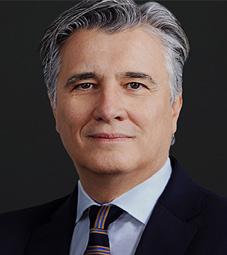
It is with sadness that we report the recent passing of the head of Vontobel’s legal department and a member of the executive committee of Vontobel Holding.
Enrico Friz (pictured), Vontobel’s general counsel since 2017, passed away unexpectedly on January 20, the bank said in a statement. It did not provide further details.
Prior to joining Vontobel, Friz spent 18 years with Swiss law firm Walder Wyss. As a partner, he advised national and international banks on legal matters, particularly in the areas of banking and finance, private banking, asset management, commercial banking, capital markets, and derivatives and financial products.
Prior to that, Friz was legal counsel at UBS in Zurich and London for about ten years. Friz was also a well-known professional in the structured products market having gained extensive experience in the area of financial products as the long-standing head of legal and regulations of the Swiss Structured Products Association (SSPA) and through his involvement in other European and national associations.
He was also a member of the expert groups for the Swiss Financial Services Act (Fidleg) and the Financial Infrastructure Act (FINfraG).
Chief Financial Officer Thomas Heinzl and Chief Operating Officer Felix Lenhard will assume responsibility for legal and compliance until further notice.
40 41 www.structuredretailproducts.com www.structuredretailproducts.com SRPInsight PEOPLE MOVES PEOPLE MOVES
International Organization of Securities Commissions (Iosco)
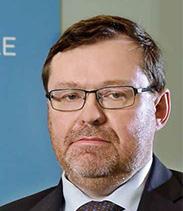
The International Organization of Securities Commissions (Iosco) has announced the appointment of Jean-Paul Servais as co-chair of the monitoring group for a two-year term.
Servais also chairs the European Regional Committee and the Finance and Audit Committee since 2014. He is also a member of the Board of Supervisors of the European Securities and Markets Authority (ESMA) and of the European Systemic Risk Board.
Servais has held a number of senior positions in the field of financial markets regulation, corporate reporting and audit. He made the headlines in the structured products market as the driving force behind the introduction of the Belgian moratorium on the distribution of particularly complex structured products in 2011.
Servais joins Sagar Teotia, chief accountant of the US Securities and Exchange.
Morgan Stanley
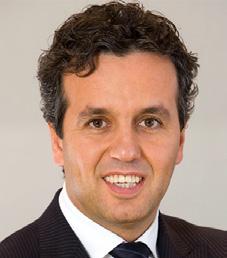
Harsh Shah, former Global Head of Financial Institutions Origination and Solutions at NatWest Markets, in London, has joined Morgan Stanley as head of fixed income division (FID) solution sales for Europe, the Middle East and Africa (Emea).
Shah joins the US bank after four years at the Royal Bank of Scotland (RBS) subsidiary Natwest Markets as head of financial institutions origination & solutions, where he reported to Scott Satriano, head of financing & risk solutions at RBS Corporate & Institutional Banking (CIB) division.
Prior to joining RBS, Shah was global head of structured sales at Nomura – he left in early 2016 after the Japanese bank restructured its wholesale businesses in Emea and the Americas, following a strategic review of its international operations.
Shah joined Nomura from Lehman Brothers in November 2008. At Nomura, he worked closely Tim Owens, global head of FX structuring, and Nigel Khakoo, global head of FX options, after becoming global head of structured sales in 2012.
Shah was part of a group of six European bankers who worked for Lehman Brothers’ UK division and made the headlines
after filing a £70m claim for lost pay and bonuses from the administrators of the collapsed bank in 2009.
The US bank has also promoted Alison Sharpe to head of fixed income division (FID) sales Emea. Most recently, Sharpe has been leading the European Life and Pension franchise within Morgan Stanley’s European Fixed Income division. She joined Morgan Stanley in 2010 from Barclays.
Shah and Sharpe both report to Salvatore Orlacchio (pictured), head of European fixed income, and Kevin Dunleavy, global head of fixed income sales.
Qontigo
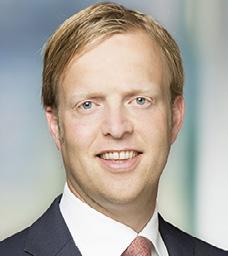
Nico Langedijk (right) has started a new position as managing director, strategic accounts at Qontigo. The company, which was created in 2019 through the combination of Axioma, Dax and Stoxx, has restructured its sales organisation and Langedijk will be leading the newly formed strategic accounts team. In his new role, he will report to Greg Fenton, head of global strategic accounts, Qontigo.
Langedijk had been managing director index sales Europe at Qontigo since September 2019. He joined the index provider in 2015 (then Stoxx) as regional director, sales Europe. Langedijk was also the head of the Dach region, Nordics and the Netherlands.
Prior to joining Stoxx, Langedijk was a senior structured products sales executive for Dutch investment product distribution at BNP Paribas in Brussels. Before that, Langedijk was an executive director, private investor products at Goldman Sachs covering accounts and structured products for the Netherlands in London until 2011. He joined Goldman Sachs in 2008 from Barclays Capital, where he was an associate director for Dutch structured private banking and retail products. Before that, he was a senior trader at the Dutch State Treasury Agency.
Goldhorse Capital Management
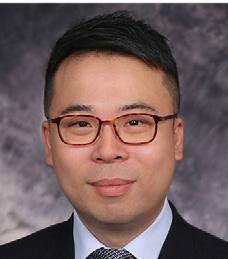
Edward Liu (right), former head of investment counselling, North Asia at EFG Bank, has joined fintech startup Goldhorse Capital Management as head of investment services, SRP has confirmed.
Liu joined the Hong Kong-based company in November 2020, shortly
after his departure from the Swiss private bank. Liu runs the investment services department that covers structured products trading and active advisory across asset classes, and teams with the IT department to build up Extramile platform by providing guidance and feedback.
Launched on 7 December 2020, the multi-issuer structured product platform is aimed at leveraging on its ability as an independent intermediary to bring bargaining power to external asset managers. Liu reports to Long Lee, CEO of Goldhorse Capital and former CEO of Vontobel Limited, a financial products arm of Vontobel Holdings.
Prior to EFG Bank, Liu spent two years at CICC as vice president in global products and advisory and one year at Noah Holdings as director for investment consultant and institutional business development. His career in Hong Kong also spanned Agricultural Bank of China, Credit Suisse and Barclays Investment Bank.
Vontobel
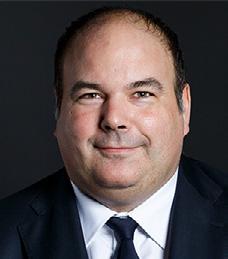
Thomas Stadler (right), head structured solutions banks at Vontobel is the latest senior executive at the Swiss bank’s structured products arm to jump ship. Stadler led Vontobel’s Deritrade structured products platform until last summer, having replaced Eric Wasescha, who left the Swiss bank following the bank’s restructuring at the end of 2019. Prior to that, he was head distribution Switzerland, platform solutions, with responsibility for the bank’s digital channel for structured products.
The Deritrade platform is ‘broadly anchored across several teams at Vontobel, both in engineering and client services,’ a Vontobel spokesperson told SRP. Roman Przibylla, head of sales structured solutions for banks and his deputy Roxana Cazacu, will oversee former duties of Stadler.
Stadler and Wasescha were key executives within the team led by Roger Studer, head of investment banking who also left as a result of a December 2019 restructuring. Eric Blattmann, the bank’s long-time head of structured products also left the bank before Studer.
Stadler has more than 15 years of experience in derivatives and structured products. He has worked for major banks, the SIX, and various well-known brokers of structured products.
The bank’s decision to change its operating model and exit the sell-side business have effectively relegated the investment bank as well as its structured products arm. Deritrade launched platforms and services unit run by veteran Brian Fischer, and
now sits alongside Vontobel’s business with independent asset managers with Markus Pfister, former chief operating officer (COO) at Vontobel’s structured products business, taking over the management of the structured products unit at the start of 2020.
Crypto Finance Group

Crypto Finance Group has appointed Rupertus Rothenhaeuser (pictured) as CEO of its brokerage business, taking over from founder Jan Brzezek, who continues as CEO of Crypto Finance AG. He joins from SIX Digital Exchange (SDX) where he was head business & ecosystem development and a member of the executive board since the end of 2018. At SDX, Rothenhäuser helped build the start-up SDX as the first regulated exchange and CSD for digital assets.
Prior to joining SDX, Rothenhaeuser had a short stint in 2018 at Wikifolio Financial Technologies, an Austrian financial services company with an online platform for alternative investing in Austria and Germany. Previously, he spent six years at Boerse Stuttgart where he was a managing director and head of global sales & marketing, and led the setup of Boerse Stuttgart cats, the exchange’s OTC platform for retail structured products.
Rothenhäuser joined the German Exchange in 2012 from Macquarie Securities where he was head of European structured products sales, a position he left when the Australian bank closed down equity derivatives in Germany and Switzerland. Before Macquarie, Rothenhäuser held a number of senior roles in structured products including head of sales and public distribution at BNP Paribas in Frankfurt, head of structured product sales, Europe at DWS Investments and also head of private investor products, Asia at ABN Amro in Hong Kong. Rothenhäuser also worked at BNP Paribas in Paris where he was global head retail listed products.
Insignia Financial

Insignia Financial, the company behind Ballybunion Insignia Defined Returns Fund, an Irish domiciled open-ended qualified investment fund, which seeks to generate long-term capital growth by investing in structured products, has appointed Aiden O’Donnell (pictured) and Brian Gray as consultants. Both O’Donnell and Gray are owner and principal at Bespoke Technical Analysis, a research firm majoring on the technical analysis of financial markets, serving
42 43 www.structuredretailproducts.com www.structuredretailproducts.com SRPInsight PEOPLE MOVES PEOPLE MOVES
a mix of Irish and international clients. O’Donnell and Gray will be tasked with further developing and implementing the investment strategy for the Ballybunion Insignia Defined Returns Fund.
O’Donnell has worked in the investment industry for over 10 years as an analyst with Focus Investment Managers, as research analyst with Davy Stockbrokers, and as investment manager and strategist with Elkstone Capital.
Gray (right) has practiced in the investment management industry for over 30 years as technical research analyst, investment manager, chief investment officer and founding chief executive for investment management companies and funds in Ireland and internationally. Gray worked 13 years as manager and CIO of Montgomery Oppenheim (now Merrion Investment Managers). He has also served as a founding Director of EBS Asset Managers, Goodbody Alternative Investment Management and as an investment manager with Focus Investment Managers.
Goldman Sachs
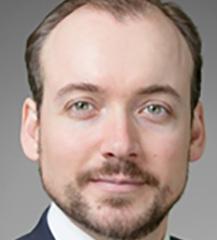
Jeremie Vuillard, former group head of advisory at Société Générale Private Banking Hambros (SGPB Hambros), the UK wealth management arm of Société Générale Private Banking, has joined Goldman Sachs as a managing director, and continental Europe head of cross markets trading, private wealth management (PWM) capital markets.
Based in Paris, Vuillard will report to Tristan Blood (pictured), managing director, Market Solutions Group, in London. Prior to joining Goldman, Vuillard spent almost 12 years at Société Générale where he held several senior roles including global head of advisory at Société Générale Private Banking (SGPB) since 2018; head of investment advisory, investment marketing & product specialists and head of structured products & derivatives (UK & CI, Kleinwort Hambros).
In 2014, he was given responsibility for the advisory division launched by the French bank to advise private banking clients both on general and specialist areas, including strategic asset allocation, equities, bonds, structured products, funds and other asset classes. In this role, Vuillard reported to Eric Barnett, chief executive at SGPB Hambros.
Vuillard (right) joined SG in 2008 as a structured products trader and was promoted to advisor structured products & derivatives in 2009. Previously, Vuillard worked in structured products sales at ODDO BHF.
SIMON Markets
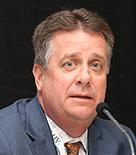
SIMON Annuities and Insurance Services, part of US multi-dealer platform SIMON Markets, has hired (right) as head of insurance solutions.

In this newly-created position, Stolz will be responsible for expanding the reach of SIMON’s annuities platform across new channels and will have responsibility for the development and release of new analytics and design capabilities as the insurtech platform achieves new scale.
Stolz joins SIMON with 35+ years of experience in the insurance industry. He was most recently president of the Raymond James Insurance Group, global wealth solutions, overseeing annuities and insurance. Stolz joined Raymond James more than 15 years ago.


Prior to joining Raymond James, he served as senior vice president of Jackson National Life, Vice president of North American Security Life, and senior vice president of SunAmerica. Stolz also served on the board of the Insured Retirement Institute, Limra’s Retirement Institute.
CreditEase

Kenneth Yeo (right) has taken up the role of chief executive at CreditEase Wealth Management (Singapore), four months after leaving HSBC Private Banking.
The former head of investment services and product solutions (ISPS), South East Asia, at the UK bank joined the subsidiary of CreditEase, a Chinese fintech company founded in 2006, in November 2019.
Yeo’s position at HSBC Private Banking was filled by Jeffrey Yap, who was promoted from his role as regional head of fixed income, currencies and commodity (FICC), Asia Pacific. In the meantime, Adam Lau was given a newly created role as regional head of markets solutions, Asia Pacific, as part of the UK bank’s push for Apac ISPS.
Yeo was promoted to his last role in September 2018 after the bank expanded its ISPS team with several senior appointments. Prior to that, he was the head of private banking sales at HSBC, responsible for structured equity, rates and funds in Apac from 2005 to 2014. He also had a two-year stint at Citigroup as a structured products dealer.



The Application Programming Interface (API), is a web-based software application which allows clients to access our data in a controlled manner & integrate it using their own software packages & systems.

Retrieve.
• Download real time SRP data directly to excel
• Receive market share on each asset class/payoff for each company of interest
Interrogate.
• Monitor & increase your market share
• Carry out accurate trend analysis with comprenhensive product data spanning over 15 years in seconds
Incorporate.
• Import data directly into in-house systems/platforms and interrogate the data and risk more effectively
• Combine data sets with other products and visualise it in the context of the larger business
44 www.structuredretailproducts.com PEOPLE MOVES
www.structuredretailproducts.com














































































